Home » Info » Malta » The Best Time to Visit Malta: A Month-by-Month Breakdown

The Best Time to Visit Malta: A Month-by-Month Breakdown
Last Updated: Jan 28, 2024 Reading Time: 14 minutes By: Shaun
Malta is considered an all-year-round destination. With its rich history, culture, and natural beauty of its beaches and countryside, it offers a variety of attractions and activities for travellers of all ages and interests all year round.
But when is the best time to visit this Mediterranean gem? The answer depends on several factors, such as weather, crowds, prices, and events. There is no bad time to visit Malta, but depending on your preferences and interests, some months may suit you better than others.
In this article, we will break down the pros and cons of visiting Malta in each month of the year, so you can plan your trip accordingly.
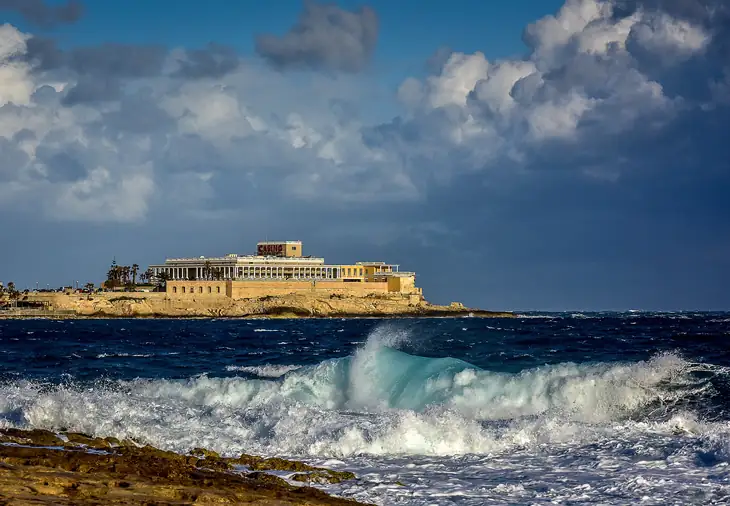
January is the coldest month in Malta; however, compared to other European destinations, Malta still enjoys mild winter weather and plenty of sunshine. The sea temperature will be too cold for most people to swim, but some brave souls may still enjoy a dip. However, it is quite popular with divers who take advantage of the low season to dive in one of the many spots around Malta and Gozo, without the crowds that it attracts during the summer months.
January is also one of the cheapest months, with lower prices for accommodation and flights, so you can enjoy the attractions and sights without the crowds and queues and have a more authentic and relaxing experience.
The main downside of visiting Malta in January is that the days are shorter and it is very possible to have numerous cloudy and stormy days. Also, some attractions may be closed or have reduced hours during the winter season, so make sure to check before you go.
- Minimum Temperature: 9.8°C
- Maximum Temperature: 15.6°C
- Sea Temperature: 16.0°C
- Sunrise: 7:11 a.m.
- Sunset: 5:08 p.m.
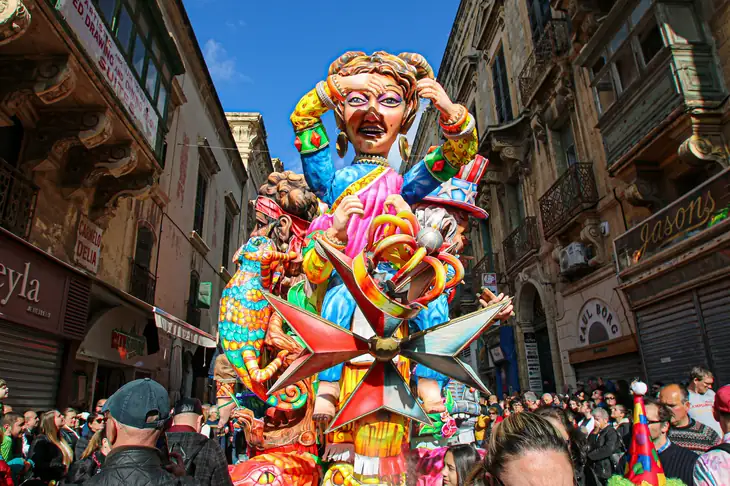
February is similar to January in terms of weather, prices, and crowds, and you can also expect some rain and wind in February, so pack an umbrella and a jacket.
February is also a good month to experience some of the cultural events in Malta, such as the Feast of St. Paul’s Shipwreck on February 10th, which commemorates the arrival of Christianity in Malta. You can witness colourful processions, fireworks, and band marches in Valletta. According to tradition, St. Paul was shipwrecked on Malta in 60 AD while on his way to Rome. He performed several miracles on the island, such as healing the father of Publius, the Roman governor at the time. He also converted many Maltese to Christianity and became the patron saint of Malta.
Another highlight of visiting Malta in February is the Carnival celebrations. Carnival is a traditional festival that dates back to the 16th century, when Malta was ruled by the Knights of St. John. The carnival features colourful floats, costumes, masks, dances, and parties that last for five days before Ash Wednesday. While most Carnival celebrations are held in Valletta, Gozo too organises its own festivities, with the most famous Carnival event being the spontaneous Carnival in Nadur, where people dress up in bizarre and grotesque outfits and roam the streets at night.
Just like January, February’s main drawback is that it is still too cold for swimming and beach activities, and some attractions may still be closed or have reduced hours during this month.
- Minimum Temperature: 9.7°C
- Maximum Temperature: 15.9°C
- Sea Temperature: 15.5°C
- Sunrise: 7:01 a.m.
- Sunset: 5:37 p.m.
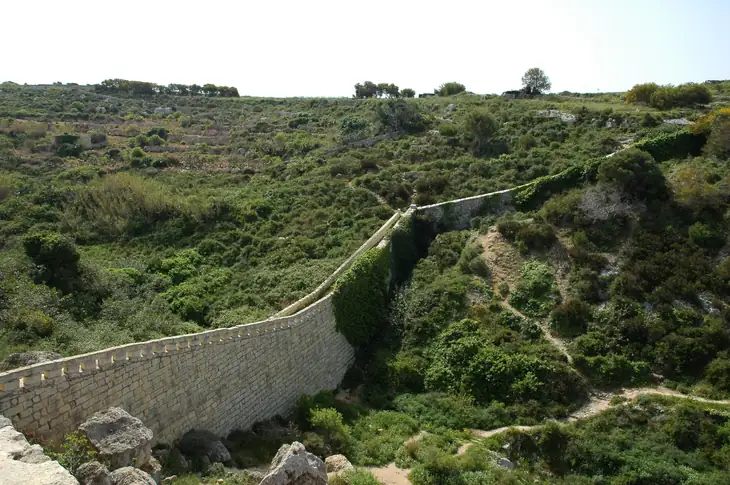
Things start to turn for the better during March, when spring starts, the weather becomes warmer and sunnier, and the flowers start to bloom. March is a great month for hiking and cycling in Malta, as you can enjoy the greenery and scenery without the heat and crowds. There are many trails and routes to choose from, such as Dingli Cliffs, Selmun, Victoria Lines, and Comino.
Prices in March would still be relatively low compared to the more popular months later in the year, so you can find some good deals on accommodation and flights and have more space and privacy at the attractions and sights.
The main disadvantage of visiting Malta in March is that it is still too cold for swimming. Also, some attractions may still be closed or operating at reduced hours.
- Minimum Temperature: 10.9°C
- Maximum Temperature: 17.5°C
- Sunrise: 6:35 a.m.
- Sunset: 6:02 p.m.

April is one of the best months to visit Malta, as it offers ideal weather for sightseeing and outdoor activities. You can expect plenty of sunshine and blue skies, but you might get the occasional shower.
April’s highlights are the Easter celebrations and traditions in Malta. You can witness processions, pageants, statues, and exhibitions that depict the passion and resurrection of Christ. You can also taste some of the typical Easter foods, such as figolli (almond-filled pastries) and kwarezimal (honey and almond cakes).
April is also a good month to visit the many attractions around Malta, as most will have opened for the upcoming summer season. You can also attend the Malta International Fireworks Festival, a spectacular display of fireworks that lights up the night sky over the Grand Harbour and other locations as Malta celebrates the anniversary of its accession to the European Union in 2004.
The sea temperature in April would still be rather cold, so if you plan to take a dip on one of the many beaches while staying on the islands, then April is not your best option.
- Minimum Temperature: 12.8°C
- Maximum Temperature: 19.8°C
- Sunrise: 6:51 a.m.
- Sunset: 7:27 p.m.
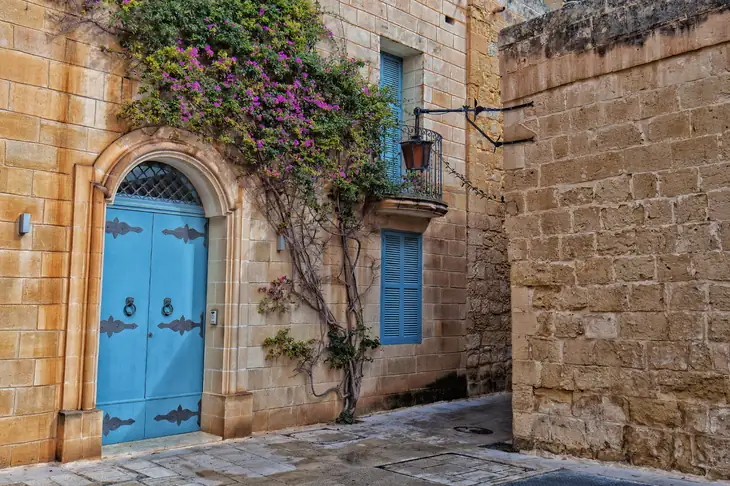
Our pick for the best month to visit Malta is May. May offers the perfect balance between excellent weather and crowds that would not have flocked to the many attractions. The sea temperature would have started to rise, making it very possible to take a dip, especially in the latter part of the month. The prices of flights and accommodations would also be rather moderate.
May is also a good month to visit Malta, as there are many events that take place in this month, some of which are:
Malta Fashion Week is a week-long event that showcases local and international fashion designers, models, and brands. It features catwalk shows, exhibitions, parties, and workshops.
Mdina Mediaeval Festival: A two-day event that recreates the mediaeval atmosphere and history of Mdina , the old capital of Malta. It features reenactments, parades, music, crafts, and food.
Summer Lust 2024: A two-day festival held in the town of Ħal Għaxaq which this year will feature performances by Umberto Tozzi and Anastacia.
Minimum Temperature: 16.0°C
Maximum Temperature: 23.8°C
Sea Temperature: 18.0°C
Sunrise: 6:04 a.m.
Sunset: 7:51 p.m.
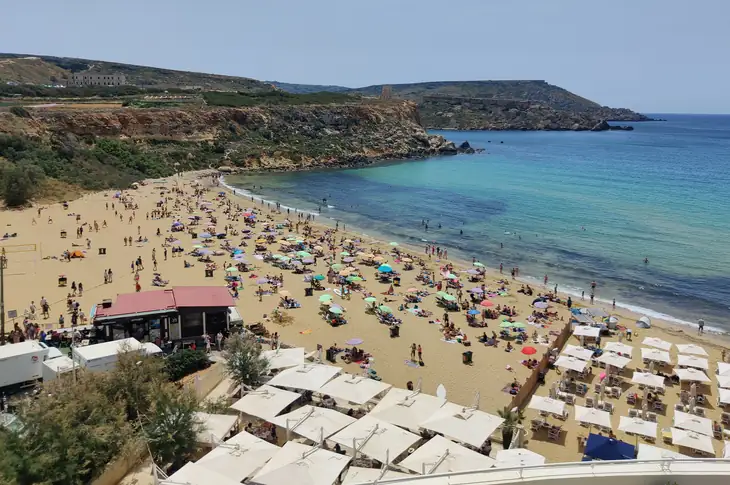
Golden Bay view from Radisson Blu Resort & Spa
The Maltese summer gets into full swing in June, when the days start to get hot and the beaches start to get full. During this time, many of the beaches around the island, which have been awarded the prestigious Blue Flag, would start to be manned with lifeguards and be serviced by many businesses offering all sorts of water sports and amenities you would expect on a popular beach.
June is also a good month to visit Malta if you are looking for lively nightlife and entertainment. There are many festivals and events that take place this month, such as:
- Earth Garden: A four-day celebration of music, art, culture, and sustainability that takes in Ta’ Qali National Park
- Malta International Arts Festival: A two-week event that showcases local and international artists in various disciplines, such as theatre, dance, music, visual arts, and literature. It features performances, exhibitions, workshops, and talks.
- L-Ghanja tal-Poplu: A song contest that promotes Maltese language and culture and features original songs in Maltese that reflect the social and political issues of the country.
As you might expect, June tends to be more expensive and crowded than off-season months. You can expect higher prices for accommodation and flights and more tourists at the attractions and sights. As heat waves are also common during this time of the year, it can also get very hot for some outdoor activities.
- Minimum Temperature: 19.4°C
- Maximum Temperature: 28.2°C
- Sea Temperature: 22.0°C
- Sunrise: 5:54 a.m.
- Sunset: 8:21 p.m.
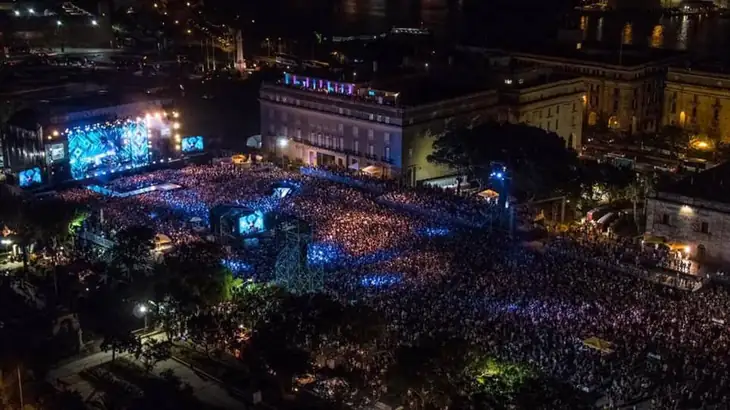
Isle Of MTV
July is when the heat gets up to 11, so expect scorching and sunny days with little rain and little to no breeze. The sea is ideal for all water-related activities, but it would be too hot to stay outside for a whole day. It’s actually not recommended by the health authorities, so make sure you mix your indoor and outdoor activities.
July is also a good month to visit Malta if you are looking for summer vibes and fun. There are many festivals and events that take place this month, such as:
- Isle of MTV Malta: A free open-air concert that features international pop and rock stars such as David Guetta, Rita Ora, Martin Garrix, and more. The event attracts thousands of music fans from all over the world, which specifically for this event.
- Malta Jazz Festival: A five-day event that showcases local and international jazz musicians in various venues around Valletta . It features concerts, jam sessions, masterclasses, and workshops.
- Farsons Beer Festival: A 10-day event that celebrates the local beer production and culture. The festival will include live music, food stalls, games, and of course lots of beer to try.
- The traditional festas happen every weekend in different towns across the islands.
July is considered peak season in Malta, so expect to pay the highest prices for your accommodations and flights to the islands.
- Minimum Temperature: 22.3°C
- Maximum Temperature: 31.3°C
- Sea Temperature: 25.0°C
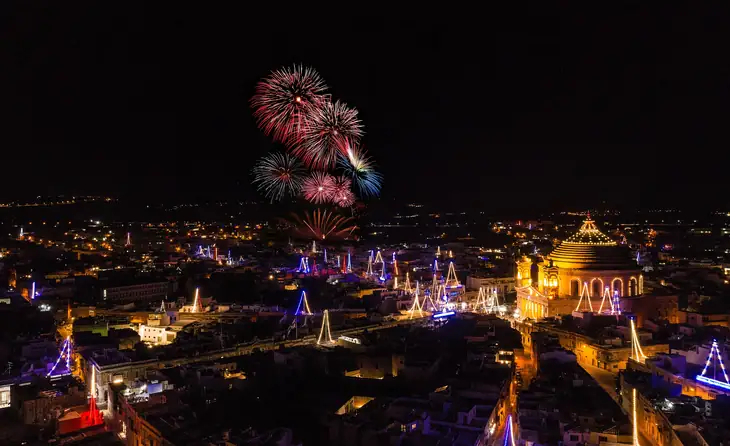
August is similar to July in terms of weather, prices, and crowds, but it’s also a good month to visit Malta if you are interested in one of the many festivals that get organised on the islands. The month also features the feast of Santa Marija (Assumption Day), which takes place on August 15th. It is a national holiday that celebrates the assumption of the Virgin Mary into heaven. It features processions, fireworks, and band marches in several localities around Malta and Gozo.
Some highlights of the festivals in August are:
- Summer Daze Malta is a music festival that features local and international DJs and artists, such as Calvin Harris, Martin Garrix, Tyga, and more. It takes place in various venues around the island, such as Ta’ Qali National Park, Cafe del Mar, and Gianpula Village.
- Glitch Festival: A four-day festival of house and techno music that takes place in many locations, including rooftop pool parties and secret cave raves.
- Delicata Classic Wine Festival: A wine festival that showcases the local wine production and culture It features wine tastings, live music, food stalls, and art exhibitions.
- Pinta - Valletta Beer Festival: A three-day festival of beer, music, food, and fun that takes place every August in the historic Tritoni Square in Valletta .
Just as in July, August can get very hot, even if the temperatures start to get lower around the end of the month, when you can also expect the first storms. August, however, is still considered peak season, so you will still have to pay top dollar for your accommodations and flights.
- Minimum Temperature: 22.8°C
- Maximum Temperature: 31.6°C
- Sea Temperature: 26.0°C
- Sunrise: 6:23 a.m.
- Sunset: 7:47 p.m.
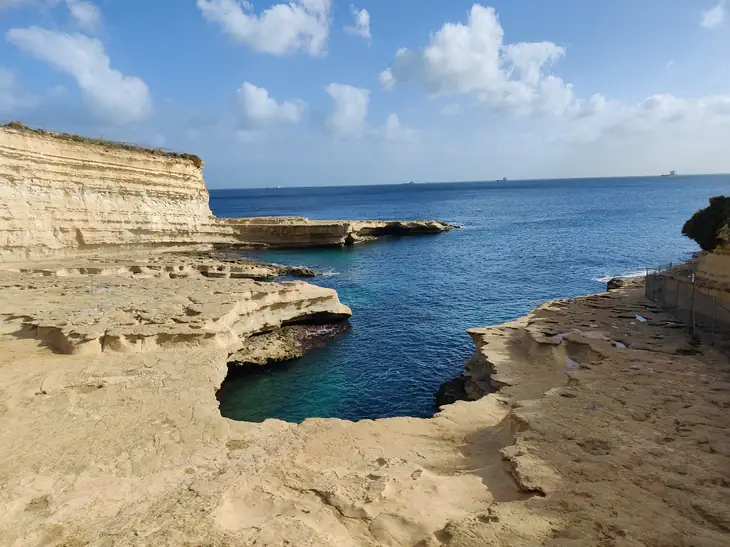
The crowds and the soaring temperatures start to dwindle in September, but this month is one of the best months for a beach holiday. Beaches like the Blue Lagoon will be less crowded, but the possibility of having a few stormy days increases as the month goes by. It is also worth nothing that the lifeguard service stops on September 15.
Prices for accommodation and flights start to get cheaper in September, so if you are on a budget but don’t want to miss the fun of the island, September is a great month to visit Malta.
- Minimum Temperature: 20.6°C
- Maximum Temperature: 28.4°C
- Sunrise: 6:53 a.m.
- Sunset: 7:01 p.m.
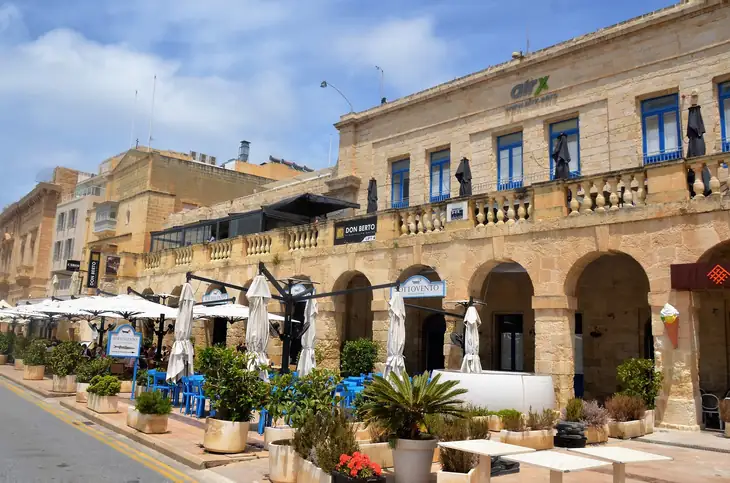
October marks the beginning of autumn in Malta. The weather becomes cooler and rainier, but most days will still be quite sunny and pleasant. The sea would still be warm enough for swimming, while crowds would be gone from the beaches. October is also a good month to visit Malta if you are on a budget.
October is the month when a number of interesting events take place, like:
- Notte Bianca: A night event that transforms Valletta into a cultural hub It features art, music, dance, theatre, and food in various venues around the city. It attracts thousands of visitors who enjoy the free entertainment and activities.
- Birgufest is a weekend event that celebrates the history and heritage of Birgu, one of the oldest and most beautiful cities in Malta. It features re-enactments, exhibitions, concerts, and candle-lit streets.
- Rolex Middle Sea Race: A prestigious sailing race that starts and ends in Malta It covers a distance of 606 nautical miles and passes by Sicily, Stromboli, Pantelleria, Lampedusa, and Gozo.
- Mdina Grand Prix: A classic car race that takes place in the streets of Mdina, the old capital of Malta, and nearby Rabat. It features vintage and historic cars from different eras and countries. The event is usually held in early October.
The main downside of visiting Malta in October is that the days are shorter and the weather can be very unpredictable, with some of the worst storms to hit the islands in recent years happening in October. So if you are visiting during this month, make sure you are prepared for the worst.
- Minimum Temperature: 17.7°C
- Maximum Temperature: 25.1°C
- Sea Temperature: 23.0°C
- Sunrise: 7:23 a.m.
- Sunset: 6:14 p.m.
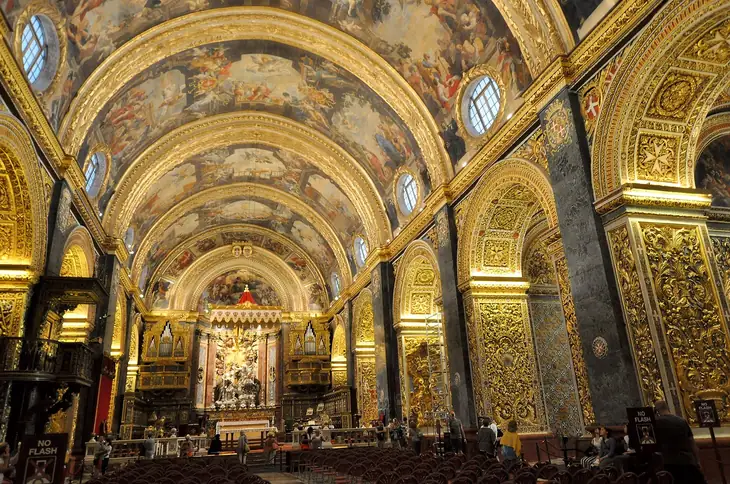
November is one of the cheapest and quietest months to visit Malta, as there are fewer tourists and lower prices for accommodation and flights. So if you’re looking for a break from the hustle and bustle of European cities, then Malta is a great option to consider.
Similar to Malta, Gozo (Malta’s sister island) would be a great place to disconnect completely and enjoy some of the local natural attractions. The sea temperature would still be rather warm, so it’s also a great month to explore the many beaches along the Maltese coast.
November is the month of the Three Palaces Festival, which is a music festival that showcases local and international classical musicians in various historic venues around Malta.
As November is quite a low season, some attractions may be closed or have reduced hours during the winter season, so make sure to check before you go.
- Minimum Temperature: 14.4°C
- Maximum Temperature: 21.0°C
- Sea Temperature: 20.0°C
- Sunrise: 6:55 a.m.
- Sunset: 4:40 p.m.
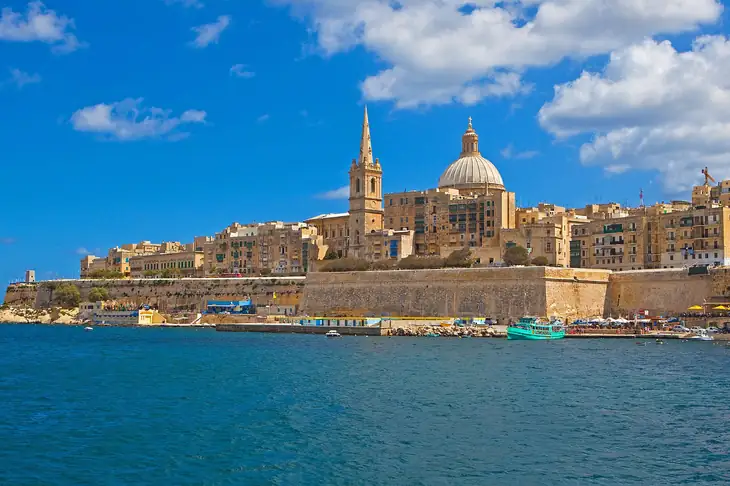
December is similar to November in terms of weather, prices, and crowds, but prices can get higher around Christmas and New Year’s.
The highlight of visiting Malta in December is the festive and charming Christmas and New Year celebrations in Valletta and other towns. You can witness colourful decorations, lights, nativity scenes, carols, and markets. You can also taste some of the typical Christmas foods, such as imbuljuta (a hot drink made with chestnuts, cocoa, cloves, and citrus peel), qaghaq tal-ghasel (honey rings), and mince pies.
During December, many localities will organise activities around the Nativity of Christ, with many exhibitions of cribs and other artifacts related to the period.
The sea does get cold to swim, and you can expect rain or at least cloud cover on most days, so if you are looking forward to some sunshine, then you are better off planning your trip during other months.
- Minimum Temperature: 11.3°C
- Maximum Temperature: 17.1°C
- Sea Temperature: 28.0°C
- Sunrise: 7:09 a.m.
- Sunset: 4:34 p.m.
In this article, we have explored the different months in Malta, what the weather is like, and how they affect the crowds and prices. We hope we have convinced you that Malta is a year-round destination that offers something for everyone, whether it is sun, sea, sand, culture, history , or festivals . Depending on your preferences and interests, you can choose the best time to visit Malta for your ideal vacation. Here is a summary of the main points:
- The high season (June–August) is the best time for brilliant beaches and big summer festivals , but also the most crowded and expensive.
- The shoulder season (March–May and September–October) is the best time for active adventures and sporty events, with moderate temperatures and fewer tourists.
- The low season (November–February) is the best time for accommodation bargains and seeing cultural sites, but it is also the coolest and rainiest.
We hope this article has helped you pick the best time to visit the Maltese islands.
About Shaun
Shaun is a passionate traveller from Malta who loves sharing his experiences with others. With a deep-seated wanderlust and a desire to explore new places.
This blog serves as a platform to inspire and motivate fellow travellers who are also searching for bliss in their lives through travel.
More About Malta

Visiting Malta: what to know, how to drive, where to eat and more
Jun 3, 2022 • 6 min read

Walks around historic cities like Mdina are a highlight of any visit to Malta; pack comfortable shoes © Sun_Shine / Shutterstock
Compact, easy to get around and with a friendly English-speaking population, Malta is a relaxed and convenient destination filled with pleasures.
Taking note of a few pre-departure tips will make a trip to the Mediterranean’s smallest island nation even more enjoyable. Here’s all you need to know before your trip to Malta.
Book well ahead for Malta’s most amazing sight
A 5000-year-old subterranean necropolis only rediscovered in 1902, Malta’s Ħal Saflieni Hypogeum is one of the country’s essential sights. As such, it’s extremely popular – and to protect the fragile, centuries-old interior, entry is limited to 80 people per day. Booking ahead online before arriving in Malta is highly recommended. Last-minute entry tickets, which also sell out quickly, are available the day prior for an additional charge of €15.
Pack a good pair of walking shoes
Malta is a great place to explore on two legs, especially around Valletta and in the hilltop walled city of Mdina . Note that both places involve plenty of steps and centuries-old cobblestones, and wearing a comfortable pair of walking shoes is recommended. If there’s a bit of rain, laneways and plazas can also become slippery, and are probably not best negotiated in a pair of sandals or flip-flops. Good walking shoes also come into their own when exploring clifftop hiking routes like Malta’s Park tal-Majjistral or the Xlendi Walk on Gozo. An effective sun hat and sunglasses are also essential to combat the heat of a Mediterranean summer.
Hit the ground running when exploring Malta’s fascinating food scene
As an island country in the middle of the Mediterranean Sea, Malta has a cuisine that’s been influenced by various cultures throughout the centuries. French, British, Italian – especially Sicilian – and Arabic flavors all overlap in the diverse food traditions here. Before leaving home, book a walking tour with Offbeat Malta Food Trails for when you first arrive in Malta. That way, you’ll be up to speed and armed with cultural and historical culinary insights as you explore local restaurants, island vineyards and food markets across Malta and its smaller sister island of Gozo .
It’s also worth booking well ahead for popular Michelin-starred restaurants like Valletta’s Noni , especially during Malta’s busiest travel months from July to August.
Sign up for an International Driving Permit
Malta is an excellent destination to explore independently in a rental car, especially on the quieter roads of Gozo. Car rental prices are some of the lowest in Europe, and having your own ride offers more convenience and efficiency than relying on Malta’s extensive but sometimes slow bus service. As in the UK and most Commonwealth countries, drivers need to stick to the left-hand side of the road. Booking ahead for rental cars is recommended for visits in July and August.
Travelers from the UK and European Union countries can use their home driving licenses, but if you’re coming from a non-EU country you’ll also need an International Driving Permit (IDP). These are issued for a one-year period by local automobile associations in travelers’ home countries.
Bring your driving A-game
Especially when driving around Malta’s main urban conurbation (incorporating Valletta, Sliema and St Julian’s ), it’s worth channeling a confident approach to getting behind the wheel. Traffic is often very busy, and local drivers can regard indicators for signaling a turn as optional. Yielding (giving way) at roundabouts is also routinely ignored. Just drive with confidence (plus an added level of awareness) and you’ll be fine.
Outside of Malta’s most built-up areas, driving is much less stressful, and having a car makes getting around Gozo and to Malta’s more remote beaches and destinations much easier. As a pedestrian, also never assume that local drivers will stop for you at pedestrian crossings.
Practice in-car safety
Malta has a very low rate of violent crime, but there are occasional reports of rental cars being broken into at beach car parks, especially if they’re adjacent to a more remote stretch of sand. Lock your car and don’t leave anything of value inside. Also take extra care with belongings when swimming and sunbathing on all beaches, as occasional opportunistic thefts do occur.
Learn a few words of Maltese
Everyone speaks English in Malta, but it’s still worth learning a few key phrases in the country’s national language (also known as Malti). Most closely related to the Arabic dialects of western North Africa, Maltese is Europe’s only Semitic language (other Semitic languages include Arabic, Hebrew and Amharic) and it’s also a language with a few loan words easily traced to their country of provenance.
Here are a few key Malti words to assist you during a trip:
• merħba (hello) • bonju (good morning) • bonswa (good evening) • grazzi (thank you)
Remember that Malta is a largely conservative country
With a strong Roman Catholic heritage, Maltese society remains largely conservative. Dress respectfully when entering a church – having a shawl to cover shoulders is a good idea – and hats and sunglasses should be removed. Away from the beach, cover up with a sarong and T-shirt, and note that topless and nude sunbathing is illegal. When meeting someone for the first time, a handshake is appropriate.
Expect a high level of health care
High-standard health and dental care is readily available, and Maltese pharmacists can give advice and sell a wide range of over-the-counter medications. Holders of a European Health Insurance Card (EHIC) – available to citizens of the EU and Iceland, Liechtenstein, Norway and Switzerland – receive free or reduced-cost health care while in Malta, and the country has reciprocal health-care agreements with Australia and the UK. Visitors from other countries should definitely have travel insurance.
Look to the locals for swimming safety
The Maltese have a well-known phrase, “ Il-baħar żaqqu ratba u rasu iebsa ,” meaning “The sea has a soft belly, but a hard head.” While beaches are largely safe in calm weather, storms, windy weather and strong undercurrents can present danger, and locals advise never to swim in rough seas. Major beaches operate a flag system and have lifeguards on patrol from June to September. If there’s no flag system operating, or if you’re in doubt, ask a local about whether and where it’s safe to swim.
Be vigilant in nightlife areas
Fueled by alcohol, fights and drunken violence have been known to occur in nightlife areas, especially around the late-night clubs of the Paceville area. Keep your wits about you, even (or especially) after a cocktail or two.
Malta and COVID-19
As of May 9, 2022, wearing a mask in Malta is only mandatory on flights, or when visiting a hospital or aged care home. While not mandatory, the Maltese government still recommends masks be worn when attending large gatherings.
Travelers no longer need to complete a digital Passenger Locator Form (PLF) but must present either a vaccine certificate, a recent negative PCR test or COVID recovery certificate upon arrival. See Malta’s Health Ministry website for the latest on COVID-19 regulations.
Explore related stories

Destination Practicalities
Aug 16, 2024 • 9 min read
From wandering the ancient streets of the old town to where to eat and sleep, we've got everything you need to know before your first trip to Genoa.

Aug 9, 2024 • 4 min read

Aug 9, 2024 • 6 min read

Jul 16, 2024 • 9 min read

May 13, 2024 • 13 min read

Dec 27, 2023 • 8 min read

Oct 25, 2023 • 7 min read

Sep 29, 2023 • 9 min read

Jul 20, 2023 • 6 min read

Jan 6, 2023 • 6 min read

Is Malta Worth Visiting? 22 Pros and Cons to Consider
Is Malta worth visiting? This is exactly what I’m going to answer in this post.
I had a great trip, but I’m not here to sugarcoat reality because not everything is perfect, so I’ve also written about the things that bothered me, and I hope this information helps you decide if Malta is your next Mediterranean destination.
* This post may contain affiliate links from which I earn a commission (for more info, read my disclosure ). As an Amazon Associate, I earn from qualifying purchases.
* I try to keep the information on this blog as updated as possible, but I still recommend consulting the latest prices, opening hours, and other details on the official website of each site, hotel, and tour, as well as checking the updated public transport routes and timetables.
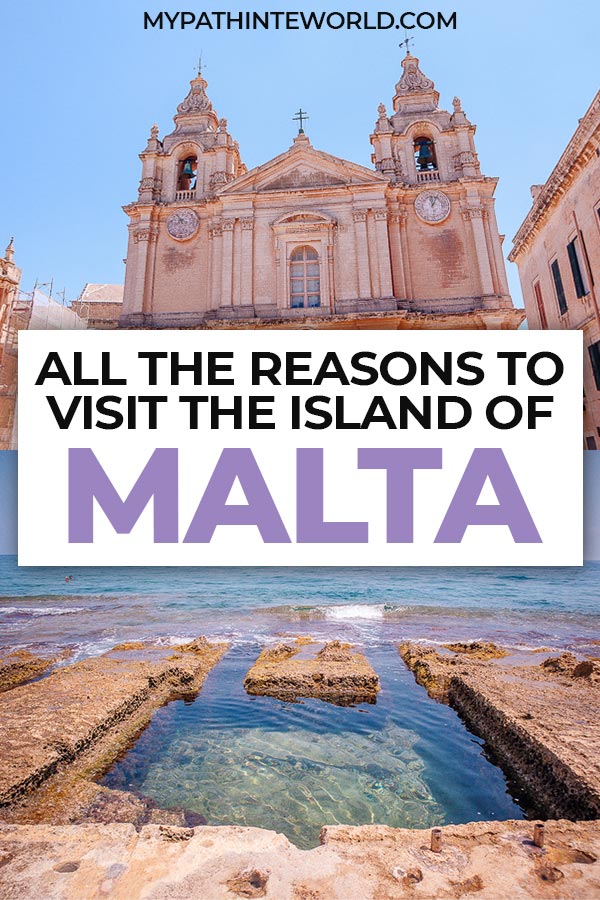
My favorite carb in Malta: Pastizzi – phyllo-like pastries filled with peas or ricotta cheese (I bought them from street vendors).
Table of Contents
Is Malta Worth Visiting? All the Things to Love About It
Due to its Mediterranean climate, Malta is mostly known as a summer destination, but if you want to avoid the heat of July and August or the high season prices, yet still enjoy warm weather, you can visit Malta in May, June, and September.
If you’re looking for an alternative Christmas destination in Europe where you won’t completely freeze, the average temperatures in December in Malta during the daytime are 16°C-18°C (61°F-64.5°F).

Thousands of Years of History
Although Malta only got its independence in 1964, its history dates back to around 5900 BC. It was ruled by the Greeks, Romans, Arabs, Knights Hospitaller, and Brits, to name a few.
Each of them has had some kind of influence that is still very much present, so imagine what it feels like to explore an island with so much history behind it.
Don’t worry, I’m just about to dive a little deeper into what exactly you can expect.
Intriguing Mix of Cultural Influences
Apart from having countless rulers, the country is also located right between northern Africa and southern Italy (mainland and Sicily).
Bring all of these cultures together, and this is what you get: Maltese sounds like a combination of Italian and Arabic, the cities look Middle Eastern, and the churches and cathedrals look Greek and Roman. That’s what I think makes Malta special.
Plus, they drive on the left side of the road, and you’ll see red phone booths scattered around (mostly in the capital, Valletta).
If that’s not enough to intrigue you and make you want to explore this island, I hope the following few things I love about Malta will.
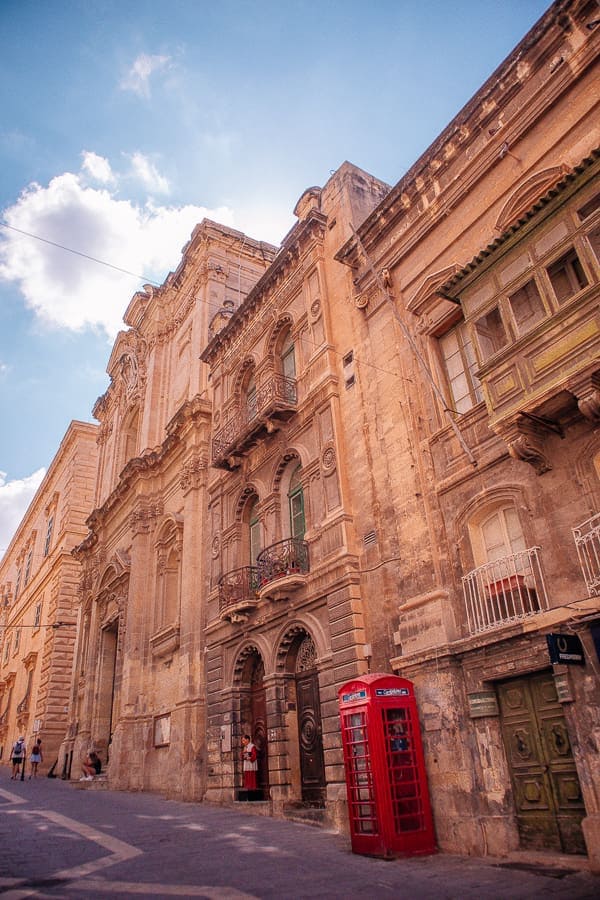
Cities That Will Make You Feel Like Stepping Back in Time
One of the biggest reasons to visit Malta is its most famous cities, which are like big open-air history museums.
The capital city, Valletta , was founded by the Knights of St John (Knights Hospitaller) in the 16th century. Many of the buildings they’ve built are still standing today, granting it the title of a UNESCO World Heritage Site.
Some of the best things to do in Valletta include seeing the city’s landmarks (like St John’s Co-Cathedral, Barrakka Gardens , and the remains of the Royal Opera House) and wandering through its charming streets adorned with colorful Maltese balconies.
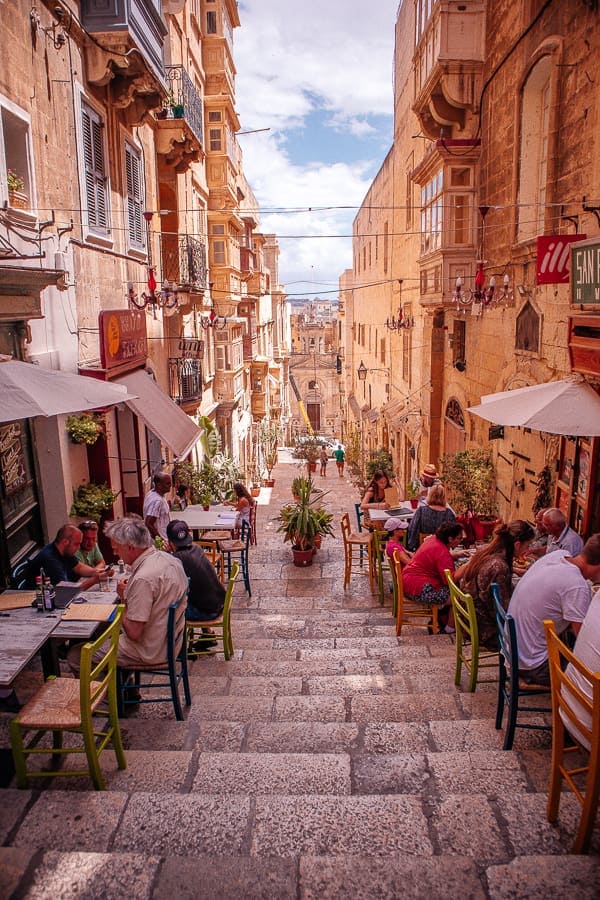
Mdina , a fortified hilltop city (and former capital of Malta) with origins dating back thousands of years ago, will make you feel like stepping into another world.
The city that you see today was built in the Middle Ages, and its medieval atmosphere is irresistibly enchanting.
Being home to less than 300 inhabitants and only allowing residents with a special permit to enter the Mdina with a car, it also provides a sense of tranquility.
You can enjoy the silence while you roam the narrow streets and alleys that look like they belong in another era.
That said, Mdina has become very popular, so get here early in the morning or wait for the day trippers to go back to where they’re staying.
Other notable historic cities are the Three Cities (Vittoriosa, Senglea, and Cospicua) and Mosta.
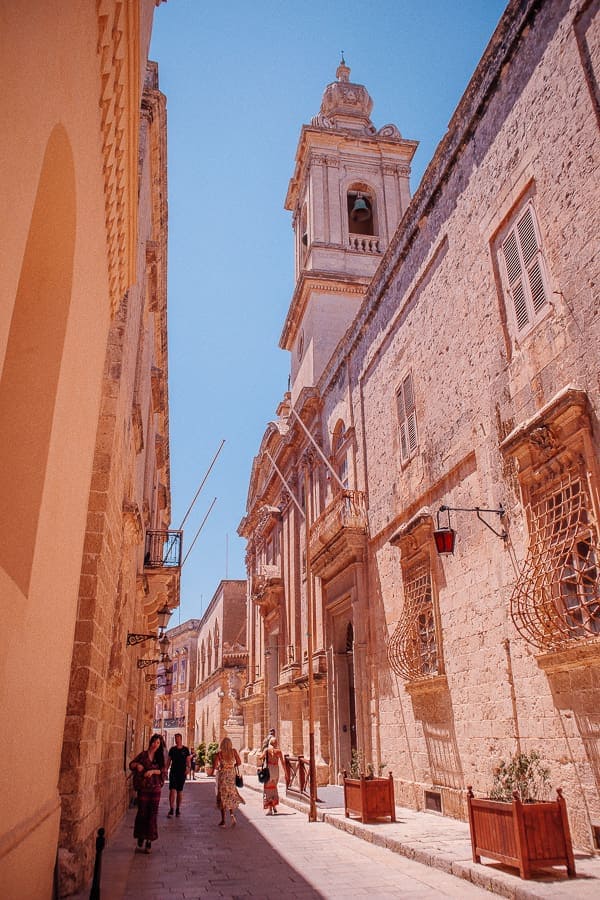
The Landmarks
Is Malta a good place to visit for sightseeing addicts? Yes!
As I’ve mentioned, Malta is steeped in history, so the landmarks you can visit are pretty incredible. Here are a few must-see spots:
- St John’s Co-Cathedral in Valletta: Built by the Order of St. John in the 16th century.
- The Grandmaster’s Palace in Valletta: The palace of the Grand Master of the Knights of St. John (temporarily closed).
- Fort St. Angelo in Birgu: Built in the 13th-16th centuries.
- Rotunda of Mosta: A 17th-century cathedral based on the Pantheon in Rome that survived a German aerial bomb attack during WWII.
- St. Paul’s Catacombs in Rabat: A large complex of underground Roman tombs.
- Mdina Cathedral: Dating back to the 17th century.
- Ħaġar Qim: A prehistoric complex of temples.
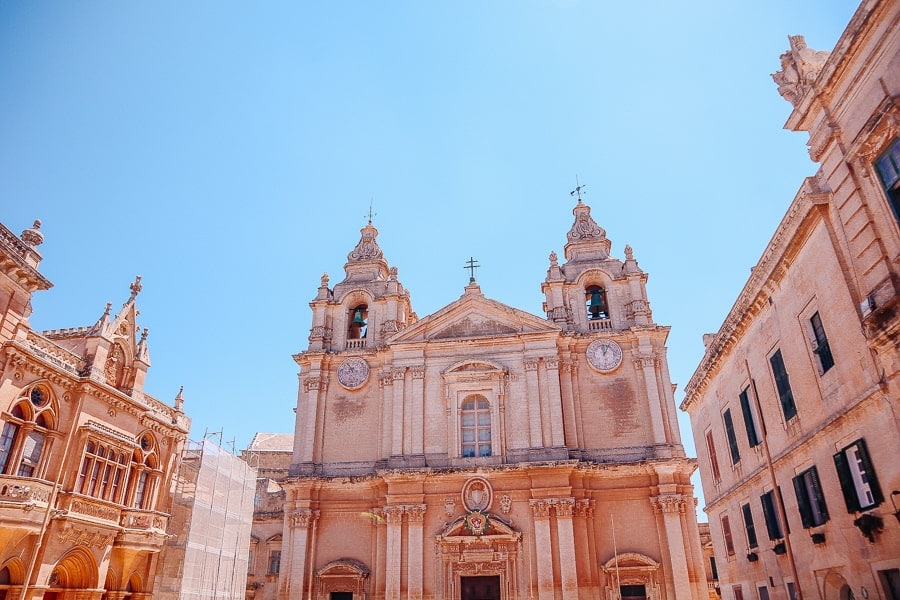
Some of the Oldest Manmade Structures in the World
I’m in awe when I see monuments that have been standing for centuries, so visiting places that have existed for thousands of years is even more mind-blowing.
From the UNESCO-listed Hypogeum of Ħal Saflieni (a prehistoric underground temple) and Megalithic Temples (some are more than 5500 years old) to prehistoric tombs, Malta keeps getting more and more interesting.
Fun fact: This is why some legends in Europe suggest that Malta is the lost city of Atlantis.
Beaches, Natural Pools, and Lagoons
Mediterranean islands kind of have to have dreamy beaches with beautiful blue water, right? Well, in Malta, it’s not just about that.
If you’re wondering if Malta is a good vacation spot, know that beyond sandy beaches like Ghajn Tuffieha (Riviera Bay), Paradise Bay, and Għadira Bay, you’ll find natural pools like St. Peter’s Pool and Għar Lapsi .
Note: From the parking lot/bus station, there are a lot of stairs to get to Riviera Bay.
Important to know: Many of Malta’s beaches are rocky and that’s not always ideal, so if you’re planning a beach vacation and that can be an issue, choose wisely where to base yourself. Here are the best areas to stay in Malta , including each location’s pros and cons.

Also, don’t forget about Malta’s famous lagoons.
Malta has two other islands, Gozo and Comino . The latter is an uninhabited island mostly known for the paradise-like Blue Lagoon and Crystal Lagoon (note that they can get crowded during the high season) , which you can visit with a boat excursion or by ferry.
There are also lots of other spots where you can get in the water like the Roman baths in Sliema (which I loved) and the area near the gorgeous Blue Grotto (a stunning cave complex where you can take a lovely boat tour).
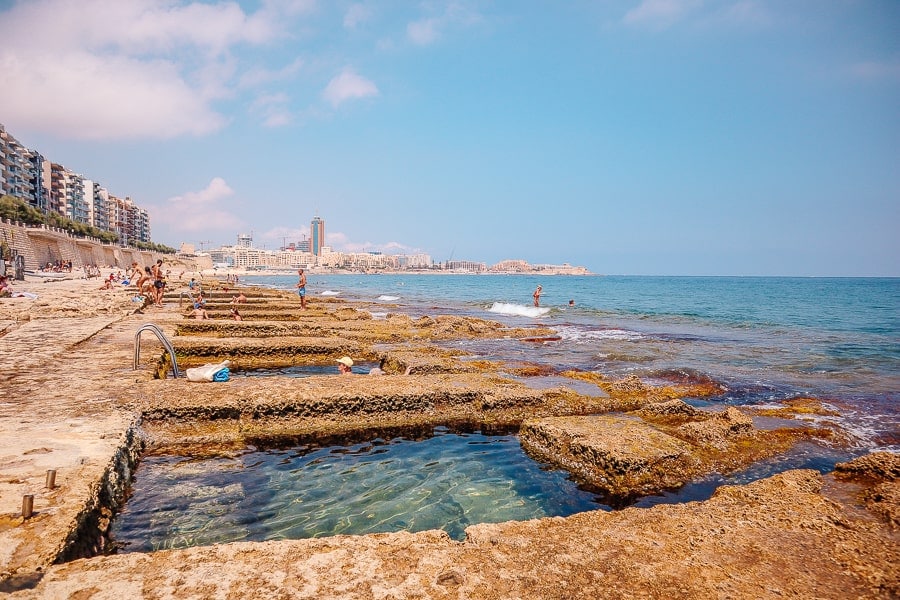
You Can Visit 3 Islands in One Trip
Speaking of Gozo and Comino, both located only a short ferry ride from the northwestern coast of Malta’s main island, they can be a great addition to your trip.
As I’ve mentioned, the uninhabited Comino is famous for its lagoons, but in Gozo, you can spend a day or two. One of its most famous sights was the Azure Window, a natural rocky arch that collapsed in 2017, but there’s much more to do and see here.
You can visit the historic city of Victoria with its impressive citadel, unwind at Ramla Bay, visit Gozo’s salt pans, dive at the Blue Hole, and that’s just the tip of the iceberg.

If you’re wondering what Malta is like in terms of food, I’m happy to say that you won’t be disappointed (as long you avoid tourist traps).
Thanks to the southern Italian cultural influence, you’ll find plenty of pasta dishes in Maltese cuisine, as well as arancini (fried rice balls coated with breadcrumbs), soups, and even cannoli.
Malta is a Mediterranean island, so you can also enjoy fresh fish and seafood, though I have to say that my favorite thing to eat in Malta was pastizzi .
I’m pretty sure that these phyllo-like pastries filled with ricotta or peas are what paradise tastes like, and the fact that they are a street food that costs less than 3 euros is a huge bonus.
Unique Attractions
While most people think Malta is a good holiday destination because of its beaches, ancient temples, and historic cities, you’ll be surprised by a few of the island’s attractions.
These include the Popeye Village (a purpose-built film set village turned into a theme park), The Malta Classic Car Collection Museum, San Anton Gardens , Dingli Cliffs, and Gozo’s salt pans.
It’s also a great destination for wine lovers, and it has many more surprises up its sleeve.
I love local festivals. I love seeing what and how other cultures celebrate, so I was glad to come across some festas in Malta.
There are more than 350 churches on this small island, and each one is dedicated to a different saint.
Each saint gets its own celebration (called festa ), so these festivals take place throughout the year across the island (many take place in summer). They include decorated streets, fireworks, band marches, and much more.
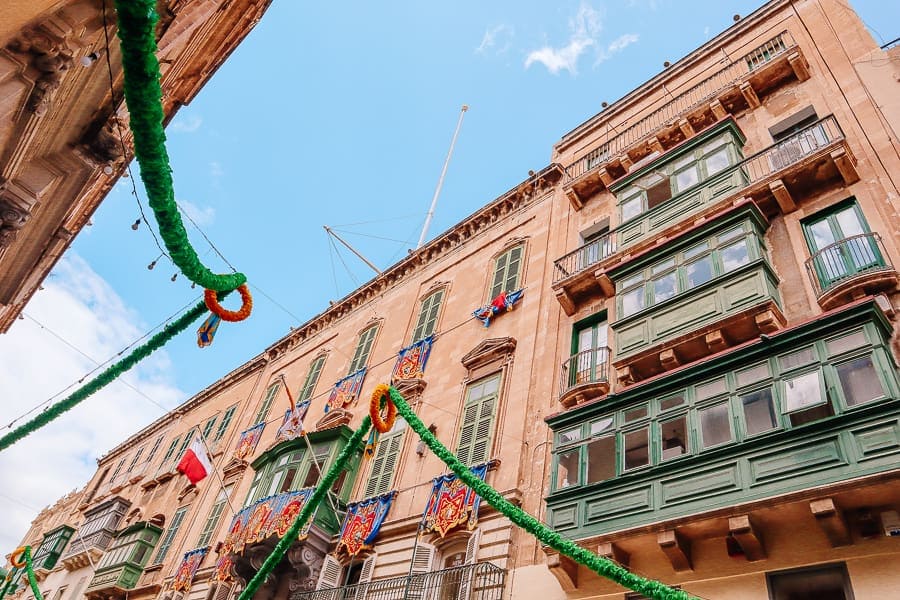
Friendly Locals
I don’t know about you, but to me, the locals’ friendliness and hospitality are other factors that can make the difference between a good trip and a great trip.
That’s why I was so happy to encounter kind and helpful locals in Malta, who were also very laid-back.
All Kinds of Groups of Travelers Will Enjoy Malta
Since it offers a mix of history, culture, and beaches (amongst other things), Malta can be a great place to visit as a family, as a couple, or even as a group of friends, especially if you’re looking for a unique European girls’ trip destination .
English Is an Official Language
One of the results of Malta being ruled by the Brits for 150 years is having English as the second official language of the island.
I know many people can manage communication issues when traveling to a destination where the locals don’t speak English, but it’s definitely a bonus if they do.
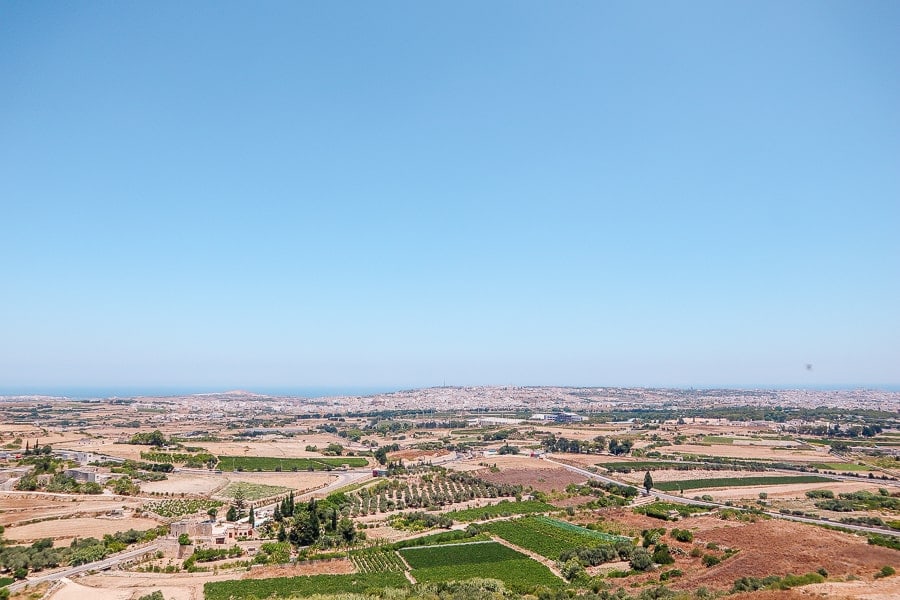
Reasons Why You Might Not Like Malta
Getting around.
It doesn’t have to be a deal-breaker, but I wish Malta was a bit easier to get around. So what are your options?
You can get around by car, but that’s an extra expense, and you also have to think about parking when planning your trip, which is not always easy to find here.
Plus, they drive on the left side of the road (which understandably can be an issue for some people), and after reading a few tips, I also wasn’t keen on driving alongside Maltese drivers.
You can also get around by bus, which is budget-friendly, but there aren’t enough buses for the number of people who use them, so there’s a chance the bus will be full, and you’ll have to wait for the next one (that also happened to me).
Also, not all of Malta’s top points of interest are directly connected by public transport, which means you have to switch buses.
Unfortunately, a 15-minute journey by car can take you an hour and a half by bus. That said, basing yourself in Valletta or Sliema will make it easier to take day trips by bus.
My solution: I used both buses and taxis, which was pretty convenient and still budget-friendly. I tried to plan my Malta itinerary as efficiently as possible in that aspect, but when getting from one point to another by bus got too annoying, I took a taxi to save time and energy. You can also use Uber or Malta’s eCabs app.
Another thing that can make your journey across Malta slightly more frustrating is the traffic. Again, it’s not a deal-breaker, but it’s something you should know and consider when planning your daily itinerary, whether you decide to rent a car or not.
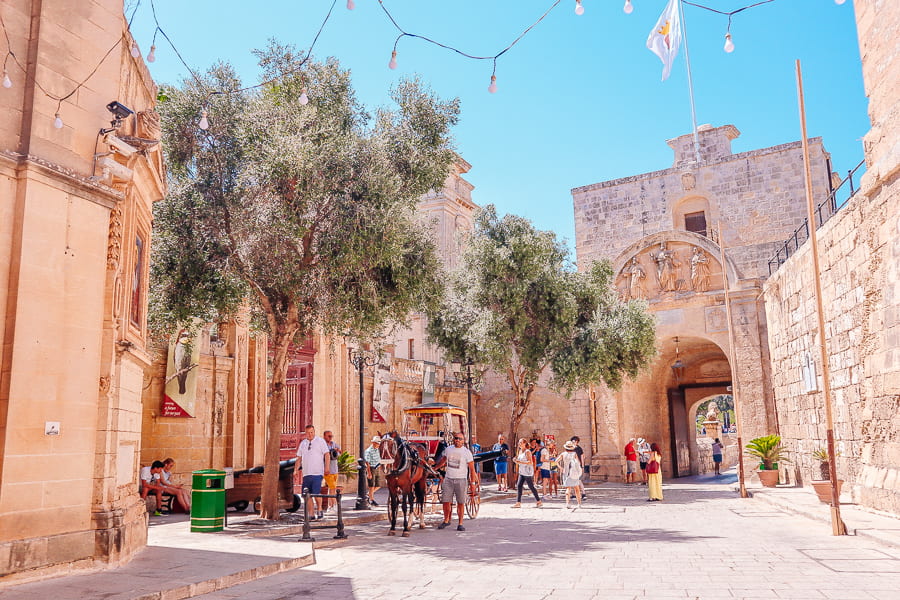
Not Every Corner Is Pretty
I think it’s important to have the right expectations, so know that most of the cities and villages you’re going to visit also have their non-photogenic areas, with neglected buildings and a gloomy atmosphere.
It’s Getting More and More Popular
Once considered a hidden gem, Malta is getting a lot more attention nowadays, which means more crowds, not only in the summer months.
Rocky Beaches
While Malta’s sandy beaches and natural pools are a pro on this list, its many rocky beaches are not suitable for everyone, so if you’re planning a summer trip, it’s a big thing to consider.
You’ll have to choose the right town to stay and the right beaches to visit, or it might mean that Malta is just not for you, and that’s ok too.
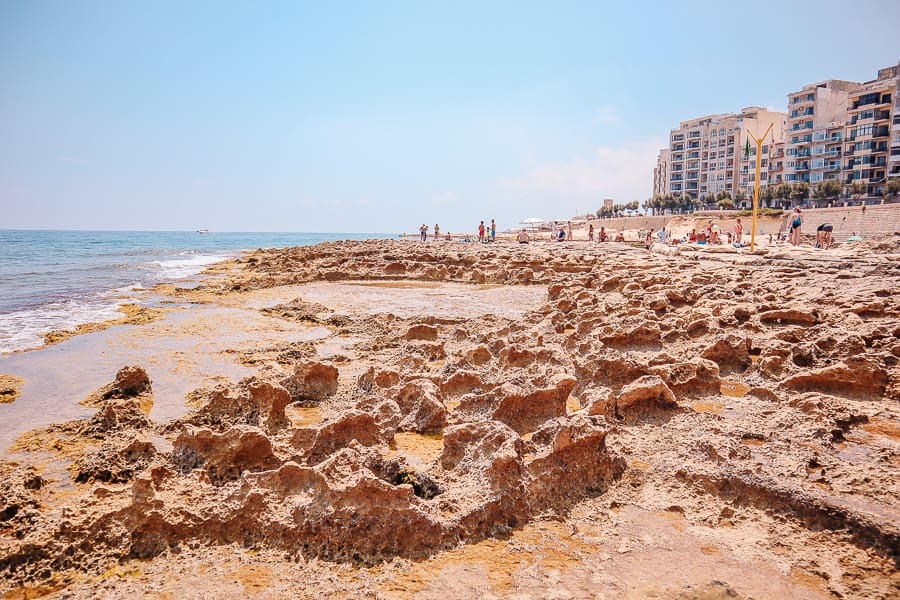
Other Notes to Help You Decide if You Should Visit Malta
What’s Malta like in terms of prices and is it cheap or expensive?
Well, it really depends on when you’re traveling and what your personal travel preferences are, so the budget aspect is neither a pro nor a con.
Considering accommodation, food, transportation, and attractions (don’t worry, there are many free things to do and see in Malta), you could plan a trip on a relatively tight budget (even in summer) OR a 5-star luxury trip.
Is Malta Safe?
Malta is considered a very safe country (I personally felt safe, but I didn’t travel alone), even in the evenings, though I can see why some streets wouldn’t be pleasant to walk through at night.
I’m also always aware of pickpockets and follow basic safety rules, especially as a woman.
How Many Days to Spend in Malta
Wondering how many days you need in Malta? If you also want to visit the islands of Gozo and Comino, I’d say 5-7 days would be ideal, though you can easily spend more time in Malta, especially if you’re craving some relaxing beach time.

Is Malta Worth Visiting? The Verdict
So do I think Malta is worth it? Absolutely! I loved exploring this island and had a memorable trip, even if some things bothered me.
Every destination has some inconveniences, but overall, I see Malta as a unique European country that needs to be on your bucket list.

Related Posts
Related posts:
- Where to stay in Malta without a car
- Malta travel tips
- Reasons to visit Turin
- Reasons to visit Warsaw
- Reasons to visit Budapest
- Reasons to visit Cadiz
- Reasons to visit Poznan
- Reasons to visit Madrid
- Is Cordoba worth visiting
- Is Porto worth visiting
- Is Crete worth visiting
- Is northern Spain worth visiting
- Is Mallorca worth visiting
- Is Bari worth visiting
- Is Aosta worth visiting
Have I convinced you that Malta is a nice place to visit? Tell me in the comments.
About Or Amir
Hey, I'm Or! I'm a passionate traveler with a severe coffee, chocolate, and pastry addiction (or any other carb for that matter). I'm always planning my next trip to Spain, Italy, or any other country in Europe, and my goal is to help you make the most of each destination.
4 thoughts on “Is Malta Worth Visiting? 22 Pros and Cons to Consider”
Hi There– is Malta walking friendly? Is it possible/advisable to rent bikes?
Hey Rachel 🙂 Each city/town is quite small so you can get around on foot. And yes, you can rent bikes in Malta, but I haven’t tried it myself.
Very fair assessment of the pros and cons. Local here!
I would say that, if one wants to keep the frustrations of getting around by public transport to a minimum, one should stay in either Valletta, Sliema/Gzira area or the 3 Cities. Sliema/Gzira/St Julians area are also nice for savouring the more cosmopolitan aspect of the island. Both Valletta and the 3 Cities are easily a day’s worth of sightseeing, and both Sliema/Gzira and the 3 Cities are connected to Valletta by ferry. The ferry trips in themselves are an experience as Maltese harbours are beautiful. Ferry trips also help you avoid the traffic frustrations or being left stranded on a bus stop.
Then of course, if one wants to visit other tourist hotspots such as Marsaxlokk or Rabat/Mdina, catching a bus is inevitable. If you don’t have a car and want to go to Gozo, Gozo is nowadays also connected via a fast ferry.
Also – Bolt, Uber and ECabs can get you around fast for relatively cheap especially if you’re a small group of friends sharing the ride.
Unfortunately, I agree – timely and efficient transport connections are not guaranteed when travelling around but with some imagination they can also be overcome.
Thank you! I appreciate your perspective as a local. Of course, public transport should not be the reason to skip out on visiting Malta, but I do think people should take that into consideration. And I agree, Sliema and Valletta are definitely great bases to explore the island.
*Your emil address will not be published. By using this form you agree with the storage and handling of your data by this website
Leave a Comment Cancel reply
Save my name, email, and website in this browser for the next time I comment.
Hi, I'm Or!
I'm a passionate traveler obsessed with traveling in Europe and discovering hidden gems in each place I visit. For me, it's not about ticking destinations off the bucket list but experiencing each one of them to the fullest. Read more about me and my story.


Feel the rush of exploration on both land and sea.
Get ready! Malta, Gozo and Comino offer stretches of countryside and stunning coastlines that are just waiting to be explored!

Grab your bicycle. Tighten those trekking shoes. Malta’s scenic trails await!
Time to start paddling. malta’s welcoming waters are perfect for year-round water activities.
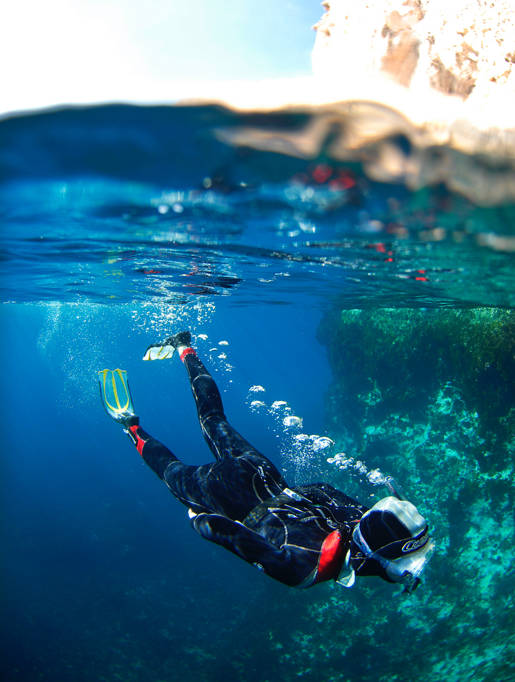
Share your moments!
Follow us on instagram, #visitmalta, don't miss out, our identity, our identity.

Delete Account
Are you sure you want to delete your account?
Continuing will remove your account on our database and will also remove all the data on this device. (Irreversable)
Car Hire in Malta

Home » Best Things to Do in Malta
Things To Do in Malta: 40+ Best Attractions and Activities
If you’re planning to visit the Maltese islands, there are more than enough fun things to do in Malta – from sightseeing to tourist attractions and more adventurous activities.
Here’s a comprehensive list of my best Malta travel tips to help you decide what to do in Malta!
Top 3 Things to Do in Malta
1. head to the stunning blue lagoon.
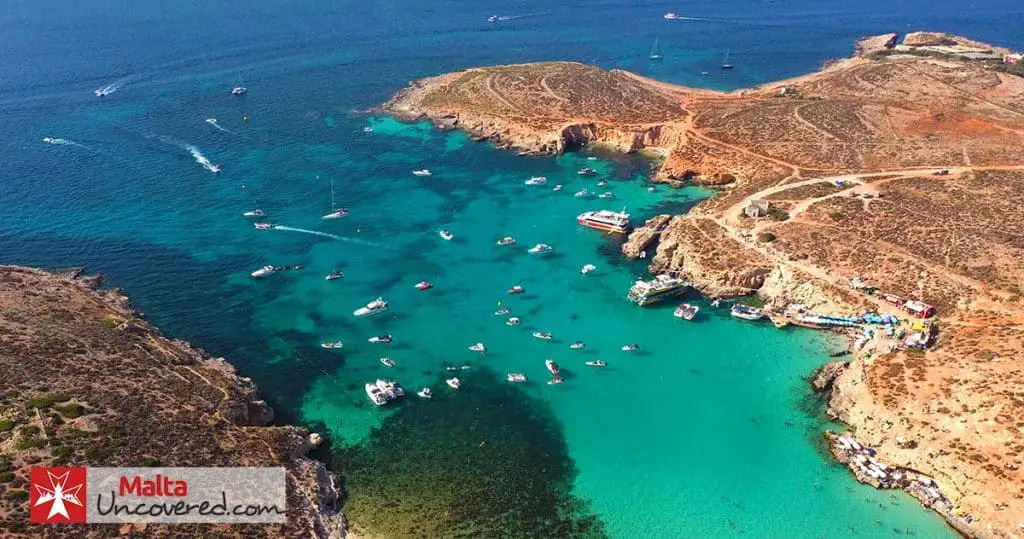
Malta’s most must-visit destination is on the tiny island Comino: Blue Lagoon Bay . Just northeast of the Maltese coast, this gem of a lagoon boasts the most sparkling azure-blue water, which will invite anyone into the water.
Head here for a lazy day of tanning, swimming and cocktails – and bring a snorkel set just in case; the marine life is exciting. The easiest way of getting there is by taking a boat trip, or tour . If you can afford it, a private boat tour is by far the best choice.
The best regular boat tour to the Blue Lagoon is one of Sea Adventure Malta , where you’ll head to the lagoon on one of their three boat options:
- Large catamaran with slides – great for families with kids
- Same large catamaran but at sunset ( highly recommended – much quieter experience!)
- Smaller catamaran (“Sea Odyssey”)
More info and booking here.
I recommend taking a boat tour rather than organising everything yourself and taking the ferry, as it will save you hassle and also because it can be hard to find a spot to relax on the tiny beach near the Blue Lagoon.
If you’d rather have more flexibility, I recommend taking the iSeeMalta Coastal route . This hop-on-hop-off ferry works the same way as the buses, which allows you to hop on at different stops and hop off wherever you want.
For just an attractive price, you can get a day pass, with which you can head to the Blue Lagoon and back to your accommodation, wherever that is.
2. Explore the Blue Grotto

The Blue Grotto is one of the most unique things to do in Malta. This is a must-visit, especially on sunny summer days when the Mediterranean seawater sparkles around the impressive rock cave formation in the south of Malta.
You’re taken inside the Blue Grotto with a short boat tour to admire the sunlight bouncing off the sandy sea floor onto the rocks above. Truly magical!
Combine it with a visit to Malta’s traditional fishing village, Marsaxlokk and its big market in this Blue Grotto and Marsaxlokk tour to make the most of your day.
3. Tour the famous Grand Harbour

The absolutely stunning and fortified capital of Malta, Valletta, is a peninsula surrounded by the Mediterranean Sea – and the Grand Harbour . From Marsamxett Harbour in the west to the Three Cities and their harbours on the east side, all the surrounding areas have played a significant role in protecting the capital throughout the centuries.
You can cruise through Grand Harbour and Marsamxett Harbour for just €20 with the iSeeMalta Grand Harbour cruise .
You’ll get the opportunity to imagine the rich history of the area as you visit the natural harbours on both sides of Valletta. This 90-minute hop-on-hop-off tour allows you to get on board wherever you are, as well as make several stops on the way. Flexible and enjoyable!
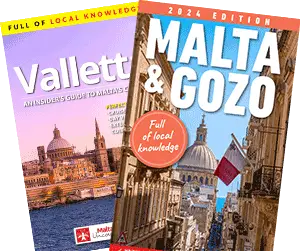
Check out my two guidebooks full of local knowledge and my best recommendations for your trip, and up-to-date for 2024 !
Malta & Gozo guide book Valletta : An Insider’s Guide to Malta’s Capital
Take the hassle out of planning your trip to Malta and be an informed traveller!
Top 5 Malta Tourist Attractions and Sightseeing Destinations
1. the capital city of valletta.
You can’t visit Malta without visiting its intriguing and gorgeous capital, Valletta. The city holds a centuries-long history and is filled with historical sites. It definitely needs to be on your list of things to do in Malta! Read more about Malta’s capital further down.

2. St. John’s Co-Cathedral
Within Valletta, you’ll find the iconic Saint John’s Co-Cathedral . The Roman-Catholic co-cathedral dates back to 1577, and its interior is considered to be one of Europe’s finest examples of high Baroque architecture. Learn more about the cathedral in the Valletta section of this article.
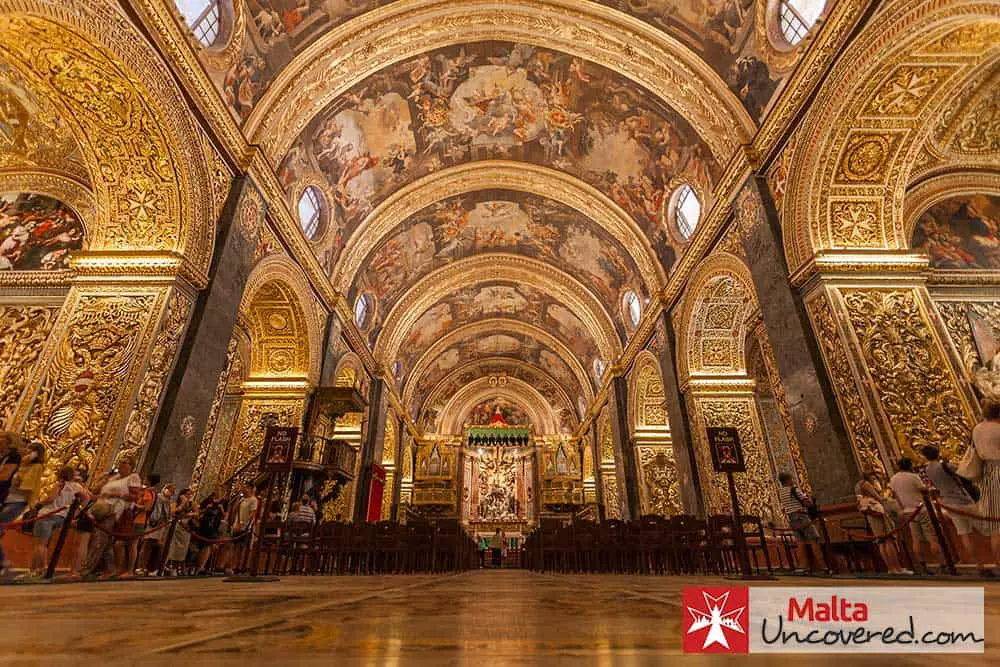
3. The walled city of Mdina
If you are interested in Malta’s history or want to visit its second-most impressive city, the ancient city of Mdina is bound to impress. The fortified city used to be Malta’s capital, and within its walls hides some of the most admirable art and architecture. Learn more about Mdina in the section below.

4. Gozo: Natural beauty
Prefer nature over city life? Then, the smaller Island of Gozo is an absolute must. Malta’s sister island is a natural gem, with bountiful greenery and plenty of beaches to explore.
A lot quieter than the bustling island of Malta, the idyllic island will capture your heart if you love peace and serenity. Further down below, you can find more details about Gozo and how to get there.
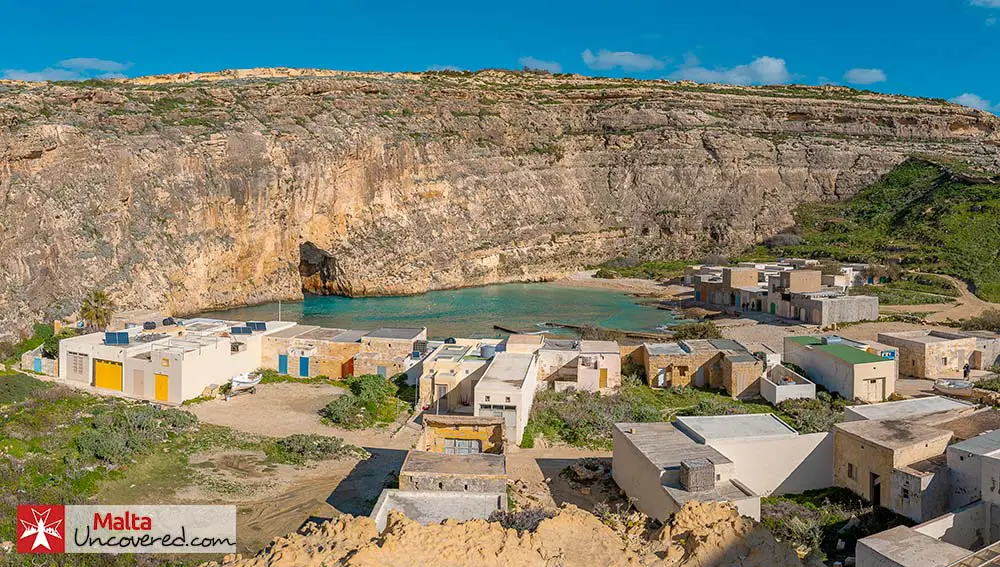
5. Ħal Saflieni Hypogeum
Malta is famous for its prehistoric buildings and remains, and one of the most impressive ones is the Ħal Saflieni Hypogeum. This underground burial site dates back to 4000 BC and was only discovered in 1902. Read on to find out more!

Visit Malta’s capital city of Valletta and its many museums
Valletta is a true gem of a place and an absolute must-visit. It’s one of my favourite places in Malta, and I always discover something new whenever I go there.
These are a few of the top places to visit and things to do while you’re there.
St. John’s Co-Cathedral
The jewel of Valletta is the St. John’s Co-Cathedral. A modestly designed exterior hides what’s inside: A jaw-dropping display of art, Baroque design, marble floors with large tombstones and several niches and chapels. To boot, its museum displays works by the world-famous late-Renaissance painter Caravaggio.
La Sacra Infermeria

La Sacra Infermeria’s Great Ward was once Europe’s longest at 155 metres long. The entire Infirmary accommodated a total of 563 beds in 1787.
When visiting La Sacra Infermeria, don’t miss out on the Augmented Reality (AR) experience named ‘Reliving The Sacra Infermeria’. Interact with the history and its protagonists while being transported back in time with this innovative concept – a fun and educational experience for everyone.
There is also the Malta Experience, an audio-visual showing narrating the intriguing 7000-year history of Malta.
In just 45 minutes, you’ll grasp the country’s unique history, which will enrich your entire understanding of the islands, its people, and the places you’ll visit.
Upper Barrakka Gardens
The Upper Barrakka Gardens are a real serene treat in Valletta, hidden away in a corner of the city and offering a break from the bustling capital.
Take a stroll past the fountain and flowers, enjoy the amazing views of the Grand Harbour and grab a coffee while you enjoy some shade. You can also visit the Lascaris War Rooms while you’re here. It doesn’t get better than this!
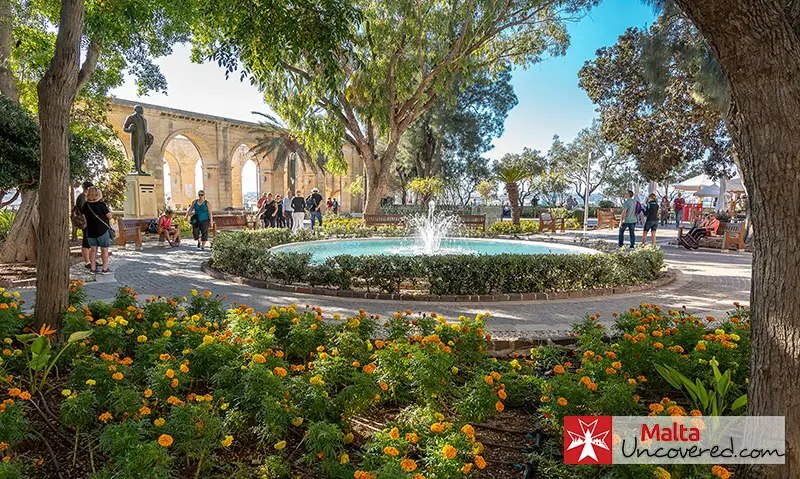
Grand Master’s Palace
Right in the centre of Valletta, you’ll find the Grand Master’s Palace in all its majesty. The palace was built between the 16th and 18th centuries as the palace of the Grand Master of the Order of St. John, who ruled Malta.
Inside the Grand Master’s palace, you’ll find stunning artworks, heritage items, and old Maltese furniture. You can also visit the Palace State Rooms, located inside Grandmaster’s Palace, which is a very impressive attraction to admire as well.
Finish your visit with the Palace Armoury, which houses a huge collection of armour and artillery that belonged to the Knights of the Order of St. John and the Ottomans.
Lascaris War Rooms
Located under the Upper Barrakka Gardens, the Lascaris War Rooms are known as Malta’s best-kept secret.
The underground complex of tunnels and chambers housed the War Headquarters, which was used to coordinate the island’s defence during the Second World War. After that, the Lascaris War Rooms were used by NATO, and today, you can visit them as a museum.
Church of St. Paul’s Shipwreck
One of Valletta’s oldest churches is the Church of St. Paul’s Shipwreck, dating back all the way to the 1570s.
The story of the apostle St. Paul is described in the New Testament, and it is believed that his shipwreck on the island brought Christianity to Malta. Today, St. Paul is considered Malta’s spiritual father.
National War Museum at Fort St. Elmo
Check out the National War Museum as you explore Fort St. Elmo . With a superb collection of artefacts dating back to prehistoric times, this national museum provides a detailed overview of Malta’s important role in several wars, especially the Second World War.
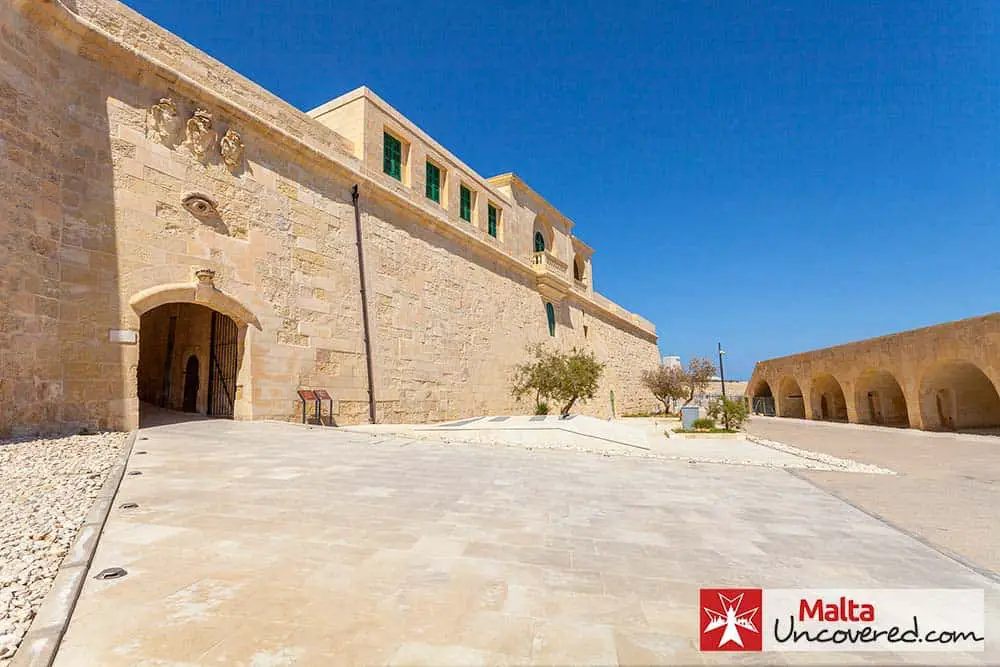
Casa Rocca Piccola
This unique attraction in the heart of Valletta is an impressive 16th-century palace of a Maltese noble family, and it’s clear from the second you step inside.
Casa Rocca Piccola is still privately owned by a noble Maltese family and lovingly taken care of, and the owners will happily show you around their beloved home.

MUŻA is an art museum located at Auberge d’Italie in Valletta, Malta, displaying works by Maltese and foreign artists representing the major European artistic styles
Formerly known as the National Museum of Fine Arts, it was located at Admiralty House between 1974 and 2016.
Today, it’s the perfect place to visit if you are into art and want to discover some of Malta’s iconic artists and want to learn about Malta’s history through the arts.
Valletta walking tours

You can tour Valletta in different ways, either by yourself with my Valletta travel guidebook (highly recommended, of course!) or with one of these well-reviewed walking tours:
- Majestic Valletta – Half-day tour – If you only have half a day to see Valletta, fear not – you’ll be able to see the main highlights. This half-day Valletta tour takes you to the Upper Barrakka Gardens, St. John’s Co-Cathedral, and Grandmaster’s Palace without feeling rushed.
- Night tour through Valletta, Mosta and Mdina – Valletta at night is a whole different experience, as people sit back and relax after a day of work. But it isn’t the only city that lights up after sundown, as Mdina and the Rotunda in Mosta shine just as bright. This night tour takes you to all three to give you the most magical Malta at night experience.
- Private Valletta Guided Tour – If you prefer a private guide, this is one of the best options I usually recommend. You’ll be guided around by one of the most knowledgeable tour guides in Malta, who knows Valletta inside out. Apart from being able to book a date of your choice, you can also customise your itinerary, covering a half day (4 hours).
- Valletta: Street Food and Culture Walking Tour If you want to indulge even more in Maltese culture, check out this tour. You’ll discover the city’s main landmarks while savouring the island’s tastiest street food.
- Valletta: The Dark Side Walking Tour – This night tour is slightly different. You’ll explore the most spectral and mysterious side of the city, with several commonly known ghost stories told at specific spots. Having seen centuries of war, occupation, and violence, that’s no surprise!
More info on sightseeing in Valletta here: Top 20 Things to Do and Places of Interest in Valletta
Admire the Natural Beauty of Gozo
If you have a day or two, I absolutely recommend visiting Gozo Island. The more natural and serene sister island to Malta offers peace and quiet and just as much history as the island of Malta itself. It’s definitely one of my favourite things to do in Malta!
How to get there
You can take the main ferry to Gozo from the north of Malta, in Ċirkewwa. Depending on where you are staying, it can take quite a while to get there – around an hour and a half from Valletta by local bus.
However, the ferry trip to take you across to Mġarr Harbour in Gozo just takes 20 minutes, and a return ticket is €4.65. Ferries go to and from Gozo almost 24/7, about twice per hour.
Another faster option (if you are located centrally) is the fast ferry from Valletta, which also arrives at Mġarr Harbour. The ferry is operated by Gozo Highspeed, charging €7.50 for a one-way ticket. The trip from Valletta to Gozo takes just under 45 minutes.
Just be aware that the vessels, although fast, aren’t recommended for people who get seasick easily!

Take a day trip to Gozo

While public transport exists in the form of buses, the network isn’t known for its efficiency, and a rental car is almost always the better alternative if you’re set on discovering Gozo without help.
These are a few of the best options for day trips in Gozo :
- A fun and exciting way to explore Gozo is on a Tuk Tuk tour . Cruising around in a traditional Tuk Tuk with a driver who knows the very best spots on the island, you’ll be sure you won’t miss a thing while enjoying the sun on the way. Each of these Tuk Tuks can carry up to 6 passengers, so it makes for a great option if you’re travelling with a group or for families with kids. Prices include hotel transfers and lunch! More info here: Gozo Tuk Tuk tours .
- You can also get Quad bike tours with the same operator. These vehicles are for real adventurers and easily cover rough terrain, seating two people. More info here: Gozo quad biking .
- Gozo is gorgeous, and if you have the time, I recommend going for at least one full day. This full-day Gozo tour lets you discover the stunning island and includes all the top attractions, and the price includes all transport and entrance costs.
- This Gozo tour “with a difference” takes you to the lesser-visited spots on the island. Visit the Ġgantija Temples complex (a UNESCO World Heritage Site), hop on a trackless train and enjoy the Marsalforn, Qbajjar and Xwejni bays. You’ll get to see nature and history at once.
- This is another great Gozo full-day sightseeing tour , taking you to the impressive Ta’ Pinu Basilica and on a train ride to the Cittadella in Victoria. Check out Gozo’s beaches and UNESCO World Heritage Sites at a relaxed pace.
Get the best travel tips from Malta Uncovered delivered to you in bite-sized chunks by email. (Unsubscribe at any time!)
Wander around Victoria’s old town
Gozo’s capital, Victoria, is a small but lovely town with an authentic atmosphere.
Wander around to explore the little alleys, many churches and cosy squares, and make your way to a local coffee shop for a quick break or Maltese pastizzi (puff pastry).
You’ll also find amazing hand-made and original souvenirs in the stores around town.
Explore the Cittadella
In Victoria lies the majestic and ancient Cittadella, Gozo’s fortified city. This is a must-see, as it dates back to circa 1500 BC and is still home to many interesting sites and museums.
Take a nice walk around the city’s walls to see Gozo’s most amazing views, and check out the Old Prison to get an idea of what the Middle Ages in the capital were like.

Visit Dwejra and its Inland Sea

Few spots around Gozo provide as much natural beauty as Dwejra and its surroundings.
From the Inland Sea (a small bathing area surrounded by tall cliffs connected to the open sea) to Fungus Rock (once known for a rare species of fungi) and Dwejra Bay itself, peace and nature are one here.
It’s one of my favourite spots around the Maltese islands.
Fancy a visit to Gozo? Get more ideas here: 25+ Things to Do in Gozo .
Hop-on-hop-off buses and ferries
If you want to see most of Malta and Gozo but are short on time or simply enjoy being driven around with the flexibility to get off anywhere, check out the hop-on-hop-off buses and ferries by iSeeMalta .
The buses and ferries take specific routes, hitting almost all of the islands’ highlights, and you can decide where you want to stop and have a better look around.
Very convenient if you want your transport sorted and know where you want to go.
Go Back in Time at the Silent City of Mdina

Valletta is a historical city, but Mdina beats Malta’s current capital in terms of age and should definitely be in your list of things to do in Malta.
The island’s former capital, also known as the Silent City, dates back all the way to the 8th century BC when Phoenician settlers inhabited the town, which was then known as “Maleth”.
But even if you’re not a history geek, Mdina is an incredible city that you can’t miss out on. Sitting on top of one of the tallest hills on the island of Malta, Mdina is a small town surrounded by tall bastions and a large moat (which is nowadays a garden).
Although it’s a popular option among things to do in Malta, it rarely feels busy in its narrow streets and alleys, and there really is nothing like it. It’s as if you’re taking a step back in time – that’s how well-preserved the place is.
Once there, I also highly recommend paying a visit to the town of Rabat, which you can find on the doorstep of Mdina.
Tours of Mdina
Because Mdina has many stories to tell, getting a tour is a good idea. These are a few of the options:
- Get a 2.5-hour walking tour of the highlights of Mdina and Rabat with an experienced local guide and learn about these towns’ fascinating history.
- This full-day culture & history tour takes you to Mdina, as well as the Dingli cliffs, Catacombs, San Anton, Botanical Gardens, Presidential Palace, the Rotunda in Mosta and Ta’ Qali.
- If you’d like to explore both Mdina and the capital, Valletta, after the sun sets (- a completely different experience), check out this popular night tour .
The best things to do and see in Mdina

- Speaking of food: Sample some local sweets paired with Italian coffee at Fontanella Tea Garden or enjoy lunch at Xara Palace – Trattoria AD 1530 . You can also grab some of the tastiest pastizzi (savoury pastries with ricotta cheese or mashed peas) made in Malta at is-Serkin (just outside of Mdina, on the edge of Rabat – close to the Domus Romana – see below).
- St. Paul’s Cathedral can be found at the heart of Mdina and is worth a visit. TIP: The small chapel of St. Roque around the corner is a little hidden gem which you can admire from inside during the day.
- Palazzo Falson is one of the quirkier places to visit in Malta. The former home of a collector of antiquities, this ages-old house is full of old weapons, art and artefacts collected by its most famous resident Olof Frederick Gollcher.
- The National Museum of Natural History is located in the stunning 18th-century Vilhena Palace, designed in the French Baroque style. From local geology to human evolution and from marine fauna to birds, you’ll discover everything there’s to learn about nature here.
- The Domus Romana is one of the finest examples of Roman Empire remains found on the island of Malta. This museum, right outside Mdina, is known for its beautiful examples of Roman mosaic floors, forming part of what once was a Roman house.
Experience Malta as a Local at the Three Cities

Walking around, you will take in the century-old architecture and hear the locals share daily gossip from their balconies over a te fit-tazza – a traditional Maltese cup of tea.
You’ll get the most out of the Three Cities by simply wandering around, having a taste of traditional Maltese food in one of the many restaurants, and taking in the views (and sun!) at the Grand Harbour.
Prefer a guided tour? I highly recommend this half-day tour (4 hours) which includes a harbour cruise by boat.
While you’re in the Three Cities, you can opt to visit these museums in Vittoriosa:
Fort St. Angelo

When the Knights of the Order of St. John arrived in Malta, it wasn’t Valletta or even Mdina, which was their seat of power. It was Vittoriosa.
At the end of the peninsula of Vittoriosa, you can find the beautifully restored Fort St. Angelo, which was the home of the Knights and which played an important part in their victory during the Great Siege of Malta.
Apart from the impressive building and its fortifications, the museum inside its walls tells the story well.
It’s not just a destination for history buffs, families with kids also enjoy a visit to explore Fort St. Angelo.
Malta Maritime Museum
Surrounded by the sea, it’s no wonder that Malta has a rich naval history.
Covering over 7000 years, the Maritime Museum presents over 20,000 artefacts that represent traces of occupancy, conflict and change throughout the centuries.
Visit UNESCO World Heritage Sites
Malta’s history is long and intriguing, so much even that three sites have been inscribed on the UNESCO World Heritage List , while another seven are on the Tentative List.
1) Valletta

First on the Inscribed list is Malta’s capital, Valletta, which is no surprise because the city is basically a historical open-air museum.
Built in the 16th century by the Knights of Malta, it’s one of the smallest capital cities in Europe, largely surrounded by impressive fortifications.
Despite intense bombing during the Second World War, a large number of centuries-old buildings have survived, and there’s something to admire at almost every corner.
Valletta is a destination in itself, and you can easily spend three days sightseeing there. A number of popular things to do in Malta can be found here, so you won’t get bored here.
2) The Megalithic Temples of Malta
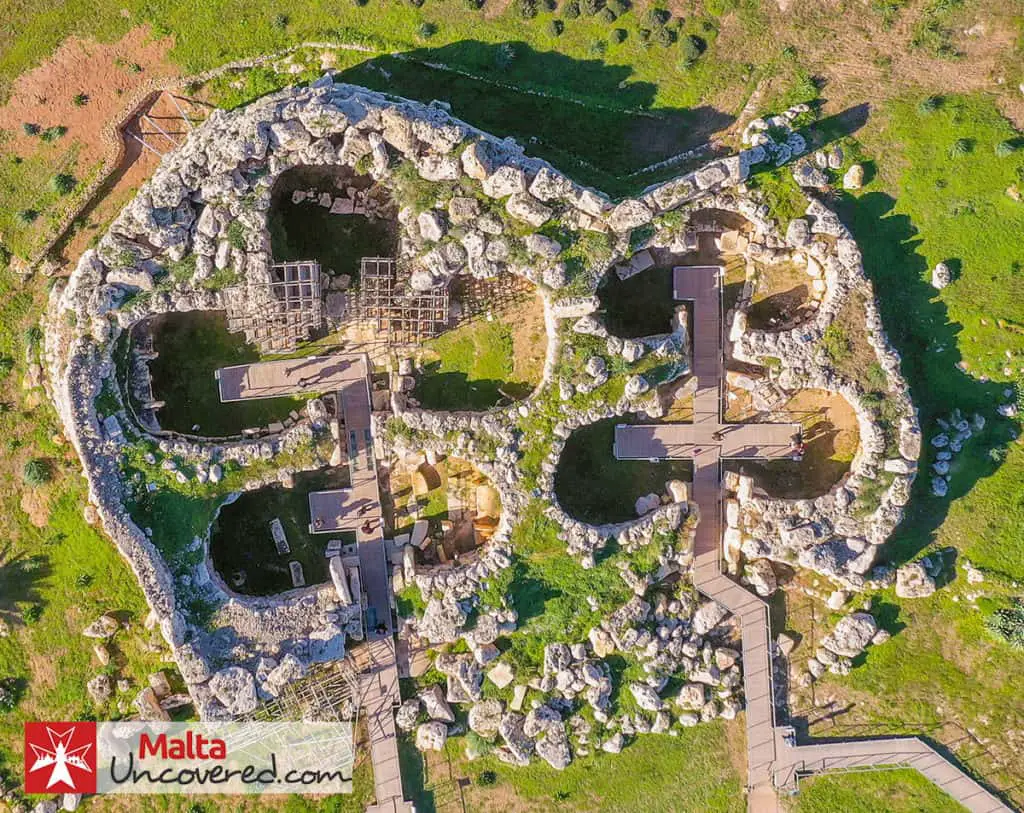
Seven of the several Megalithic temples that Malta is known for are recognised by UNESCO, and most are open to the public.
The most important temples were built between approximately 3600 BC and 2500 BC, and are impressive to visit. Although you could list them all on your sightseeing itinerary, my advice is as follows:
- Visit the Ħaġar Qim and Mnajdra temples near the village of Qrendi, in the South of Malta. These temples are some of the best-preserved examples and are located next to each other. They also have an excellent visitors’ centre that provides rich information on the temples as a whole and the people who built them.
- Alternatively, the ancient ruins of the Tarxien Temples are also a great option and a little more central on the island of Malta. The Tarxien Temples also have a small visitors’ centre, but more importantly, the remains of the temples are worth viewing.
- Visit the National Museum of Archaeology in Valletta if you want to get more detail on the subject and admire some of the unique artefacts found around some of the temples.
- If you plan to stay in Gozo, the Ġgantija Temples should be on your to-do list.
3) Ħal Saflieni Hypogeum
Another extremely impressive UNESCO World Heritage site to visit is the Hal Saflieni Hypogeum, an underground Neolithic complex in use between 4000 BC and 1500 BC.
Discovered accidentally in 1902, it’s a popular sightseeing destination for history buffs and curious culture-seekers. In fact, I recommend buying tickets in advance from Heritage Malta if you decide to visit the Hypogeum.
Sample fresh seafood at Marsaxlokk

An island in the middle of the Mediterranean can’t go without a fishing hotspot, and Malta’s famous fishers’ village is Marsaxlokk , in the south of the island.
With picturesque, colourful luzzu (traditional Maltese fishing boats) all around the harbour and some of the island’s best seafood, you can have an amazing time in this tiny fishing village.
On Sunday mornings, there’s a famous fish market, selling anything from seafood and fresh produce to souvenirs and clothes.
Don’t miss out on the local cuisine, especially if you love fish, and wander around to spot the Marsaxlokk parish church.
Though Marsaxlokk is picturesque, it is also quite small, so the things to see and do are limited. That’s why I recommend taking this combo tour with the Blue Grotto , where you’ll be hitting the South’s highlights in one day.
The Blue Grotto and Marsaxlokk make for a great sightseeing combination, so make sure to see both!
Take the family to Popeye Village
Popeye Village is a must if you’re travelling with children, but the view is just as impressive even if you aren’t with the little ones.
The colourful village was built up against the cliffs in Mellieħa in 1980 as a set for the iconic Popeye film starring Robin Williams, so you might recognise it if you’re a bit of a movie buff.
If you’re on a budget or don’t feel like going inside Popeye Village, do go for a swim at the bottom of the cliffs at Anchor Bay.
This picturesque bay and its sparkling water lures down many tourists. It’s a great spot for snorkelling and diving, too, provided the wind direction is favourable.

Visit the Malta National Aquarium
If you love marine life or want to entertain the whole family, visit the Malta National Aquarium.
Discover the Mediterranean species that can be found all around the Maltese islands and plunge into Gozo and Comino’s waters.
But that’s not all – you’ll find history from the time of the Roman Empire, exotic species in the Tropical Oceans zone, and plenty of other interesting animals in the reptiles and amphibians area. Lots to see and learn!
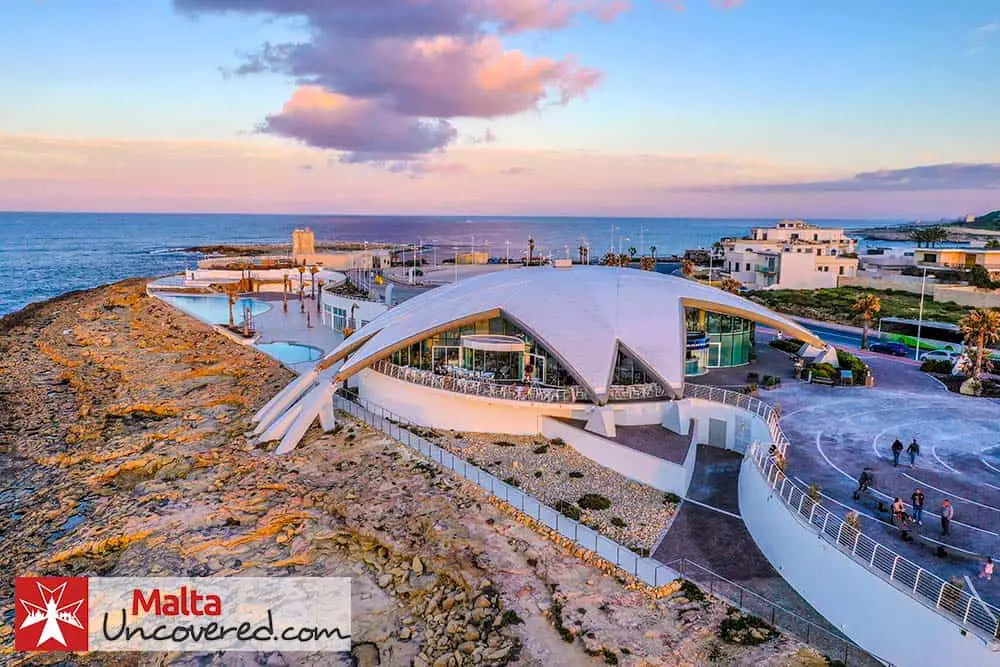
Explore Sea Life in the wild
Scuba diving.
Malta’s underwater life is rich, as you’ll find caves, reefs, and wrecks dotted all around the islands.
Some of Europe’s most impressive dive sites are located in Malta, Gozo and Comino, and with plenty of Mediterranean wildlife, there is always something interesting to see.
Gozo’s Blue Hole is one of the most stunning dive sites around the island, as you descend into a natural swimming pool and find yourself between caves and rock formations.
A good reason to visit Malta is that it is also a great place to discover scuba diving, get your license, or even further develop your skills by doing one of the more advanced courses.
These are a few recommended dive sites to check out:
Um El Faroud
A massive tanker, 115 metres, sunk to a depth of 31-35 metres as an artificial reef in 1995. Today, it is considered one of Malta’s best wrecks, with lots of marine life and plenty to explore. You need to be an advanced diver for this dive site.
Patrol boat P29 & Rozi
This East German minesweeper became a Maltese Patrol Boat in 1997 and sunk a decade later, after which it sits on a sandy bottom at 36 metres deep. Head to the north of Malta, Cirkewwa, to get a good look at the P29 and the Rozi wreck. You need to be an advanced diver for this dive site.
Santa Marija Caves, Comino
You can swim through the Santa Marija caves in Comino, where you’ll see stunning light reflections on the vertical walls and observe abundant marine life. This diving spot is for divers of all levels.
Inland Sea Tunnel, Gozo
Near the famous Blue Hole in Gozo, you’ll find the Inland Sea Tunnel, which is also an amazing dive site. Swim through the 80-metre-long tunnel from the Inland Sea to the open water and admire the light show that the sun and water create.
Marine wildlife
Malta’s cliffs, reefs and wrecks are home to many different Mediterranean marine species.
The ones you’ll likely come across underwater in Malta include groupers, amberjack, various bream, octopi, squid, flying fish, gurnard, stingrays, meagre, bogue, red mullet, parrotfish and the occasional moray eel.
Though there aren’t many big fish around the islands, a lucky diver might see tuna, dolphins and bonitos – but don’t get your hopes up too much.
Snorkelling
The best spots for snorkelling in Malta are those with crystal blue waters and plenty of rock formations and reefs for fish and little sea animals to hide in.
Fomm ir-Riħ Bay
This remote beach is a gem in itself, as not many tourists find their way there, but the underwater life might be even more impressive.
The sea is clean and clear, and there are plenty of fish, water animals and rock formations to spot.
St. Peter’s Pool
St. Peter’s Pool in the south of Malta is a popular natural pool where locals and tourists alike love to enjoy a long summer day. Besides cliff jumping, the area is ideal for snorkelling, as there are rocks, cliffs and beautiful fish species. You can get there either by car, on foot or by taking one of the boat tours from Marsaxlokk.
Blue Lagoon
Comino’s Blue Lagoon is perhaps Malta’s most famous spot for swimming, sunbathing and snorkelling. Remember that you definitely won’t be the only one here, but many would say the crystal-clear waters are worth it.
Check out the caves, beaches and inlets around Comino too, where you’ll find more marine life and fewer people.

Head to one of Malta’s Sandy Beaches
Although it’s just a tiny rock in the Mediterranean Sea, there are a few beautiful sandy beaches around Malta to admire.
You can either visit these beaches by public transport or with a rental car or get a completely different experience by enjoying these beaches at sea: This Beaches and Bays Cruise by Sea Adventure Excursions is highly recommended .
You’ll sail to the first two of the beaches below (depending on the weather/sea conditions) on a catamaran, combined with a stop at the Blue Lagoon.
Want to just visit the beaches the old-fashioned way? These are my top recommendations!
Golden Bay Beach

Golden Bay is Malta’s staple beach and definitely the place to go if you’re seeking a sunny day on a large, clean and comfortable beach.
Although it does get busy in summer, Golden Bay has access to all the amenities you might need – from toilets and kiosks to all the water sports you can imagine – and is easily accessible for anyone, whether you drive yourself or hop on a bus.
Especially on weekends, it’s also a popular beach for barbecues, and there’ll be a lively atmosphere.
Riviera Bay

Riviera Bay, also known as Għajn Tuffieħa , is my all-time favourite beach. It is situated right next to Golden Bay Beach, just a 10-minute walk away. It is lesser-known and therefore slightly less busy, but it’s also way smaller, making it quite crowded on summer days.
At this beautiful bay, you’ll find more surfers, stunning nature to explore and hike through, and one restaurant that offers basic meals.
Do keep in mind that you need to descend and ascend stairs to get there, so it’s not the most easily accessible.
St. Peter’s Pool isn’t a sandy beach but a beautiful natural pool near Marsaxlokk, in the south of Malta.
This natural swimming pool is popular for swimming and cliff jumping, but you can also do some amazing snorkelling here.
Head to the natural swimming pool from Marsaxlokk village and spend your day on the rocks while taking in the sun and the sea.
Experience the Festa

Maltese people know how to party, and it shouldn’t surprise you that they have plenty of local and national festa – feasts.
For each saint and event, there is a celebration, and towns typically have their own annual festa, too.
Check out this year’s festa calendar to see when and where there’s a festa around the time you’re visiting because it will definitely make your visit a unique one.
Visit the Mosta Dome
Perhaps Malta’s most impressive church (though the St John’s Co-Cathedral is hard to top) is the Mosta Dome, aka Rotunda . Built in 1860, this enormous rotunda is the third-largest unsupported dome in the world.
It survived a 200kg bomb falling through the dome without exploding during the Second World War, and today, it still proudly stands as one of Malta’s most impressive buildings.
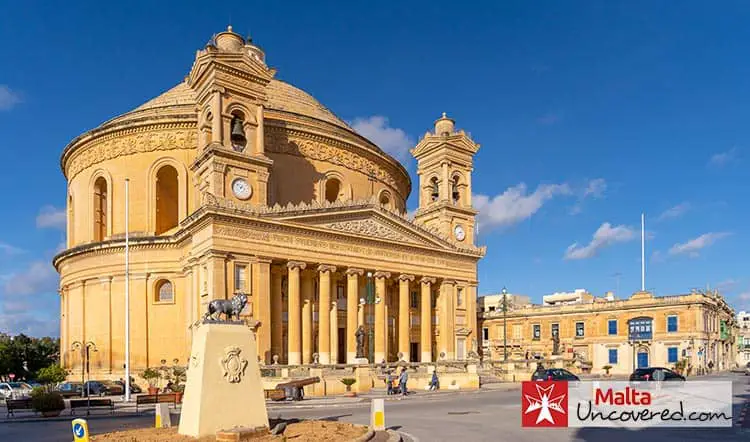
Go Underground at St. Paul’s Catacombs
The St. Paul’s Catacombs, located on the outskirts of Mdina in the heart of Rabat, served as a burial ground during the Punic and Roman times.
The Roman-Byzantine catacombs complex consists of interconnected underground cemeteries, with more than 30 hypogea, used up to the 7th and 8th centuries AD. Definitely worth a visit if you’re a history buff!
Let yourself go: Malta Nightlife
Want to sample some of the local nightlife ? There are a few key options to go for.
1) Paceville
If you’re a party animal, you can’t head to Malta without visiting Paceville. The town is Malta’s party hub, with a concentration of restaurants, bars, pubs and clubs. Whatever you’re into, you’ll find it here. Brace yourself for cheap drinks and good times.
2) Join a boat party
Available during the summer months only, you can hop on a large boat for a sunset trip from Sliema with a DJ, drinks, games and a lot of fun. These boat parties in Malta are a really unique experience and a great way to cool down, dance and have a few drinks while taking in the scenes, enjoying the vibes and taking a dip in the sea at one of the stops.

3) Open-air clubbing
If you’re visiting Malta during the warmer months, you have to give open-air clubbing a go. The Gianpula complex on the outskirts of Rabat consists of 9 nightclubs, of which 7 are outdoor clubs, as well as rooftop lounges, pool clubs and festival arenas. With 200 parties per year, there is always something going on at Gianpula.
Alternatively, check out Uno , which is located on the edge of the Ta ‘Qali Crafts Village.
4) Valletta
If you’d rather have a more laid-back night out, Valletta is perfect to spend your evenings. From good restaurants to classy wine bars and cosy pubs, you’ll find that there is always something going on. Check out the famous Bridge Bar for live jazz on Fridays and a drink on the ancient steps, or head to Trabuxu Wine Bar for a glass of local wine in a 400-year-old stone vaulted cellar.
Unwind in Nature
Dingli cliffs.
For some of Malta’s most stunning views, you need to visit the Dingli Cliffs in the south of the island – it’s Malta’s highest point. Spend an afternoon hiking along the beautiful coast and explore Dingli village’s surroundings before settling down to enjoy the sun setting into the sea.
From there, you’ll also be able to spot the small, uninhabited islet of Filfla.
Buskett Gardens
Buskett, also known as the Buskett Gardens, is Malta’s only woodland area, located in a valley in Siġġiewi – just east of Dingli and close to Rabat and Mdina.
The forest was planted by the Knights of St. John as a hunting reserve and is now home to the Verdala Palace – an official residence of the President of Malta.
San Anton Gardens
The San Anton Gardens are some of Malta’s loveliest gardens, with a large variety of gorgeous flowers and plants. Located in the central village of Attard, you’ll discover fountains, little ponds with ducks and turtles, and plenty of different flowers.
The garden and the San Anton Palace it belongs to were built by Grand Master Antoine de Paule, and the palace is currently the residence of the Maltese President.
Sample Maltese food
Whether you are into street food, traditional food or wine, tasting the local food is one of the best things to do in Malta.
Street food
You can’t say you’ve been to Malta if you haven’t sampled some of the islands’ delicious street food.
The country’s national snack is known as pastizzi – a hearty puff pastry traditionally filled with peas or ricotta cheese. Nowadays, you’ll also find different variations, such as chicken and Nutella.

You’ll find pastizzi in almost every town and on every street corner, but the best pastizzi in the country can be found in is-Serkin in Rabat, near Mdina.
If you’re up for a bigger meal, a traditional Maltese dish is rabbit stew. Locally known as stuffat tal-fenek (rabbit stew) has been a staple of Malta since the Knights of St. John, so it is both a cultural and a historical staple. Not to be missed!
For lunch, grab a ftira with a can of Cisk (local beer) at a local kiosk. This isn’t just your average sandwich – it is made of mouthwatering Maltese bread, topped with tomato sauce, tuna, fresh tomatoes, onion, capers, goat cheese, and olives.
Maltese wine
While Malta may not be the first destination that comes to mind when thinking of wine tasting, the archipelago has a perfect Mediterranean climate, and local wineries know exactly how to make great wine out of indigenous grapes.
Visit the Marsovin Winery or the Meridiana Wine Estate to get a taste of Malta’s very best wines, or order La Valette while eating out.
If you can’t get enough of it, this wine-tasting day trip combines a visit to the historic Three Cities with Senglea, Vittoriosa, and Cospicua in the morning and a professional afternoon wine-tasting.
Decided on what to do in Malta or not quite sure yet?
If you need more inspiration, check out these carefully crafted itinerary guides:
- Malta itinerary for 7 days/one week
- 4/5 Days in Malta
- 3 Days in Malta
Do you still have questions left? Let me know in the comments below, and I’ll get back to you ASAP!

Edward is the Founder and Editor of Malta Uncovered and author of two guidebooks on Malta and Valletta.
As a tourist-turned-expat with Maltese roots, he knows the islands inside out and helps thousands of visitors enjoy a memorable trip every year.
Was this article helpful? Share it with your friends!
Just a small note regarding Golden Bay. One cannot use open fire (charcoal) BBQs on that beach; park rangers rightfully monitor the area, and you would risk a fine. Best that the article is updated. 🙂 Nonetheless well done for the article and ideas!
Thanks Chris, you’re right – updated it. Thanks for flagging! 🙂
Amazing blog! I won’t need to check any other travel blog/TripAdvisor – everything you need and more is nicely structured in this guide! Already booked my accommodation based on your tips. One question – are the Jeep safari trips in Gozo nice and relaxed or would it be a little wild? I’m traveling with a toddler and I’m not much into wild driving either 😉 Thanks
Hi Andra, you’re welcome and happy to hear it’s been helpful to you! It’s been a while since I went on one of those safaris but if I recall correctly they’re not the smoothest of rides. To be safe I’d contact whatever company you’re looking to use in advance though.
Very, very helpful guide. Thank you!
Glad it’s proven to be useful to you, Geraldine!
Leave a Reply Cancel reply
Your email address will not be published. Required fields are marked *
Yes, I would like to receive emails from you with Malta travel tips.
Get the most out of your visit to Malta with Malta Uncovered guidebooks – full of local knowledge and up-to-date for 2024 !
© 2006-2024 Malta Uncovered. All Rights Reserved.
Grumpy Camel
Slow travel & blogging, welcome to my malta travel guide.
Here, you’ll find everything you need to know about visiting the island.
As a local, I share my top suggestions for things to do, places to stay, food to try, and more.
So, let’s dive right in!
Things to know about Malta
- It's a bilingual country. Most people speak English.
- Summers are really hot! The best time to visit Malta is between September and May.
- We drive on the left.
- We have a lot of public holidays and celebrations.
- Malta is one of the most densely populated countries in the world, so expect a lot of noise and traffic.
- Food portions are huge!
Related Posts

10 Things to Know Before Visiting Malta

When is the Best Time to Visit Malta? A Local’s Advice

20+ Insider Tips for Visiting Malta
Where to stay in malta.
for the nightlife and cafe scene
for the culture, history, and wine bars
for a quiet, romantic holiday
for the beaches and restaurants
for an authentic experience
Recommended hotels in Malta
Julina Boutique Living : a boutique hotel in the heart of Mosta with lush, Baroque-style decor, and a sun terrace.
Palazzo Bettina : a boutique hotel In Birgu, housed in a beautifully renovated 17-century palace.
Soleil B&B : an adults-only B&B in Gozo, housed in a traditional building with a swimming pool.
Adelphi Boutique Hotel : a beautiful hotel located on a quaint street in Rabat, with a restaurant that serves traditional Maltese food.
Provicario : this B&B is housed in an old building in Victoria (Gozo), and offers stunning view of the citadel.
Casa Ricca : a family-run guesthouse in a restored palazzino in St. Paul’s Bay, with beautifully decorated rooms and a nice garden.
Things to do in Malta
- Spend a day in Valletta
- Visit Mdina at night
- Enjoy a traditional meal in Mgarr
- Go for a swim at Golden Bay
- Visit the Hypogeum
- Tour the megalithic temples
- Take a day trip to Gozo
- Go hiking in Dingli
- Explore the old city of Birgu
Beautiful beaches
- Paradise Bay
- Ghadira Bay
Historical sites
- Fort St. Angelo
- St. John's Cathedral
- St. Paul's Catacombs
What to eat in Malta
a savoury pastry filled with ricotta or mushy peas

typically cooked in red wine and garlic, and served with potatoes

calamari, octopus, lampuki, tuna, and other local fish

Honey rings
kannoli, imqaret, helwa tat-tork, and other Maltese sweets

What to pack for Malta
- Pest repeller for mosquitos
- Good walking shoes for Malta's uneven pavements
- Stainless steel water bottle to stay hydrated
- Microfibre sand-free beach towels
- Polarised sunglasses for the unrelening sun
- SPF sunscreen
More Malta travel guides & tips

One Week in Malta: A Complete Itinerary

Driving in Malta: A Survival Guide for Tourists

Malta in October: A Complete Guide

Visiting Malta in December (A Complete Guide)

Staying at Palazzo Bettina in Birgu

Where to Stay in Malta: Best Areas & Hotels

Amazing Malta Tours (& Gozo Day Trips) You Cannot Miss

10 Best Things to Do in Mdina, Malta
This page contains affiliate links. This means that I may receive a commission on any purchases made through the links in the post at no extra cost to you.
© Grumpy Camel 2024. All rights reserved.
Privacy Overview
Find Your Way Around

How to get there
Send by e-mail.
About The Malta Tourism Authority (MTA) was formally set up by the Malta Travel and Tourism Service Act (1999) . This clearly defines its role - extending it beyond that of international marketing to include a domestic, motivating, directional, co-ordinating and regulatory role. The Act strengthens the public and private partnership in tourism through greater and more direct participation by the private sector in national planning and development of the industry.
Mission and Vision The mission of the Malta Tourism Authority is to advance the economic and social activity of tourism in the national interest, by working with all stakeholders to develop a sustainable industry for current and future generations.
Our vision is to achieve a healthy, sustainable and equitable tourism sector for the Maltese Islands, attracting regular inflows of quality visitors throughout the year from a diverse range of source markets, whilst ensuring that those who choose our destination are served with professionalism and care.
Values The values which drive our vision and mission are those of QUALITY in everything we do, AUTHENTICITY in presenting the true character of our destination, COLLABORATION in partnering with stakeholders local and foreign, and LEADERSHIP in offering guidance and inspiration to those who operate in the tourism sector.
Objectives The Malta Tourism Authority (MTA) has a diverse role, but one which in essence is all about creating and fostering relationships. The MTA is the tourism industry's regulator and motivator, its business partner, the country's brand promoter, and is here to form, maintain and manage meaningful partnerships with all tourism stakeholders. Primarily, this means attracting visitors to the Islands, but also working closely alongside the private sector partners. Importantly, the MTA is also here to help strengthen the industry's human resources, ensure the highest standards and quality of the Islands' tourism product, and foster relations with local and international media.
Our Work The Malta Tourism Authority is here:
- To promote and advance Malta as a tourism destination.
- To advise Government on tourism operations and to issue licences under the Act.
- To contribute toward the improvement of the level of human resources in the tourism industry.
- To advise government on the planning and development of the tourism industry as well as on the infrastructure supporting the industry.
- To assist and advise on any tourism-related issues and to undertake activities, events and projects to fulfil our role.
Before MTA MTA replaced its predecessor the National Tourism Organisation of Malta (NTOM) which in turn was preceded by the Malta Government Tourist Board.

- Cities & Destinations
- Visit Malta
Visit Malta TV Spot, 'Sightseeing'
Get free access to the data below for 10 ads, there's a better way to measure tv & streaming ad roi.

- Real-Time Ad Measurement Across Linear and CTV
- TV Ad Attribution & Benchmarking
- Marketing Stack Integrations and Multi-Touch Attribution
- Real-Time Video Ad Creative Assessment
Check out Visit Malta's 15 second TV commercial, 'Sightseeing' from the Cities & Destinations industry. Keep an eye on this page to learn about the songs, characters, and celebrities appearing in this TV commercial. Share it with friends, then discover more great TV commercials on iSpot.tv
- Submissions should come only from actors, their parent/legal guardian or casting agency.
- Submit ONCE per commercial, and allow 48 to 72 hours for your request to be processed.
- Once verified, the information you provide will be displayed on our site.
Have questions about this ad or our catalog? Check out our FAQ Page .

COMMENTS
Pressed for time? With history, sun, food and fun, the Maltese Islands are ideal for Short Breaks with your loved on. #MoreToExploreSee more from @Visitmalta...
Reggaeton & Dembow. An Energetic Latin-Themed Event in Malta. Get all the information you need for your trip to Malta! Book tickets, discover new places to visit, find amazing things to do and more!
20 sec TVC Advert - Visit Malta TVC's campaign 'More to Explore'. 'And the best thing about it, when you think you've seen it all and…
The Maltese Islands offer a wide choice of things to see and do: From UNESCO World Heritage sites to modern hotels and spas, from a relaxing beach and café l...
Check out Visit Malta's 30 second TV commercial, 'Explore More' from the Cities & Destinations industry. Keep an eye on this page to learn about the songs, characters, and celebrities appearing in this TV commercial. Share it with friends, then discover more great TV commercials on iSpot.tv
This is "VISIT MALTA - ADVERT" by Olympia Shodipo on Vimeo, the home for high quality videos and the people who love them.
148K Followers, 1,328 Following, 2,902 Posts - VisitMalta (@visitmalta) on Instagram: "Official Instagram page for #VisitMalta ☀️ Use #VisitMalta or #Malta to give us permission to repost on our platforms! [email protected]"
VisitMalta is the official website for Malta, Gozo & Comino. Malta is a great place to visit for sea, sun, culture, attractions and all year round events.
Pressed for time? With history, sun, food and fun, the Maltese Islands are ideal for Short Breaks with your loved on. #MoreToExploreSee more from @VisitMalt...
Visit Malta, Il-Kalkara, Malta. 1,025,732 likes · 5,967 talking about this. Official fanpage Visit Malta | Pagina ufficiale Visit Malta | Page officielle de Visite Malte | Página oficial de Visit...
It is also worth nothing that the lifeguard service stops on September 15. Prices for accommodation and flights start to get cheaper in September, so if you are on a budget but don't want to miss the fun of the island, September is a great month to visit Malta. Minimum Temperature: 20.6°C. Maximum Temperature: 28.4°C.
Here's all you need to know before your trip to Malta. Book well ahead for Malta's most amazing sight. A 5000-year-old subterranean necropolis only rediscovered in 1902, Malta's Ħal Saflieni Hypogeum is one of the country's essential sights. As such, it's extremely popular - and to protect the fragile, centuries-old interior, entry ...
Tip #1:You can negotiate the price and lower it by a few euros. Tip #2: If possible, look for a taxi station instead of catching one on the street. Tip #2: You can also use Uber or Malta's eCabs app. Marsaxlokk fishing village.
At the heart of the Mediterranean, Malta has a long history of making guests feel at home. With its superb cuisine and fine wines, spectacular scenery and ra...
Essential Information. Whatever type of traveller you are, there's some information you simply can't do without. Whether it's time zones, visas, weather in the Maltese Islands, hospitals, language, or public holidays you have questions about, you're sure to find an answer. And with all the information you need a mere click away, you can ...
VisitMalta. Welcome to the official Vimeo channel of the Malta Tourism Authority. Here you can browse videos about the Maltese islands - Malta, Gozo and Comino - attractions,….
Cities That Will Make You Feel Like Stepping Back in Time. One of the biggest reasons to visit Malta is its most famous cities, which are like big open-air history museums.. The capital city, Valletta, was founded by the Knights of St John (Knights Hospitaller) in the 16th century.Many of the buildings they've built are still standing today, granting it the title of a UNESCO World Heritage Site.
Experience. So what might you experience on an adventure holiday in the Malta? Rock climbing, abseiling, trekking, kayaking, surfing, cycling & more!
Top 3 Things to Do in Malta. Top 5 Malta Tourist Attractions and Sightseeing Destinations. Visit Malta's capital city of Valletta and its many museums. Admire the Natural Beauty of Gozo. Hop-on-hop-off buses and ferries. Go Back in Time at the Silent City of Mdina. Experience Malta as a Local at the Three Cities.
Our 3 minute advert for Visit Malta TVC's campaign 'More to Explore'. 'And the best thing about it, when you think you've seen it all and done it all... there's always so much more'. Production - @dreambeachmedia Producer - @joshstockdalee Director - @alexboulton Co Director - @christ0f Co Producer - @joshhill972 Co Producer - @maxwellm99
Spend a day in Valletta. Visit Mdina at night. Enjoy a traditional meal in Mgarr. Go for a swim at Golden Bay. Visit the Hypogeum. Tour the megalithic temples. Take a day trip to Gozo. Go hiking in Dingli. Explore the old city of Birgu.
About. The Malta Tourism Authority (MTA) was formally set up by the Malta Travel and Tourism Service Act (1999). This clearly defines its role - extending it beyond that of international marketing to include a domestic, motivating, directional, co-ordinating and regulatory role. The Act strengthens the public and private partnership in tourism ...
Check out Visit Malta's 15 second TV commercial, 'Sightseeing' from the Cities & Destinations industry. Keep an eye on this page to learn about the songs, characters, and celebrities appearing in this TV commercial. Share it with friends, then discover more great TV commercials on iSpot.tv
Norway's new ad has attracted nearly 20 million views since its release in late June (Credit: Getty Images) In a summer of overtourism, a viral Oslo travel advert with nearly 20 million views is ...
Details for MIDDLETON TRAVEL - Ad from 2024-08-18. 52 mins ago. Info; Details; Middleton Travel. 2831 PARMENTER ST STE 190, MIDDLETON, WI 53562 +1(999)999-9999 Girls Getaway Specialty trips designed just for the girls! ... Malta The Southernmost Country in Europe February 8-15, 2025 •Roundtrip Air from Chicago O'hare •6 nights at 4-star ...